Cobblestone walkways represent timeless elegance that seamlessly blends functionality with aesthetic appeal. These durable pathways have graced European streets for centuries and continue to enhance modern landscapes with their distinctive charm. From traditional herringbone patterns to contemporary geometric designs, cobblestone offers endless possibilities for creating stunning outdoor spaces. Whether you're designing a formal entrance or a casual garden path, cobblestone's natural texture and rich color variations provide the perfect foundation for any landscape style. The versatility of this material allows homeowners to achieve both classic sophistication and modern innovation in their walkway designs.
1. Classic Herringbone Cobblestone Walkway
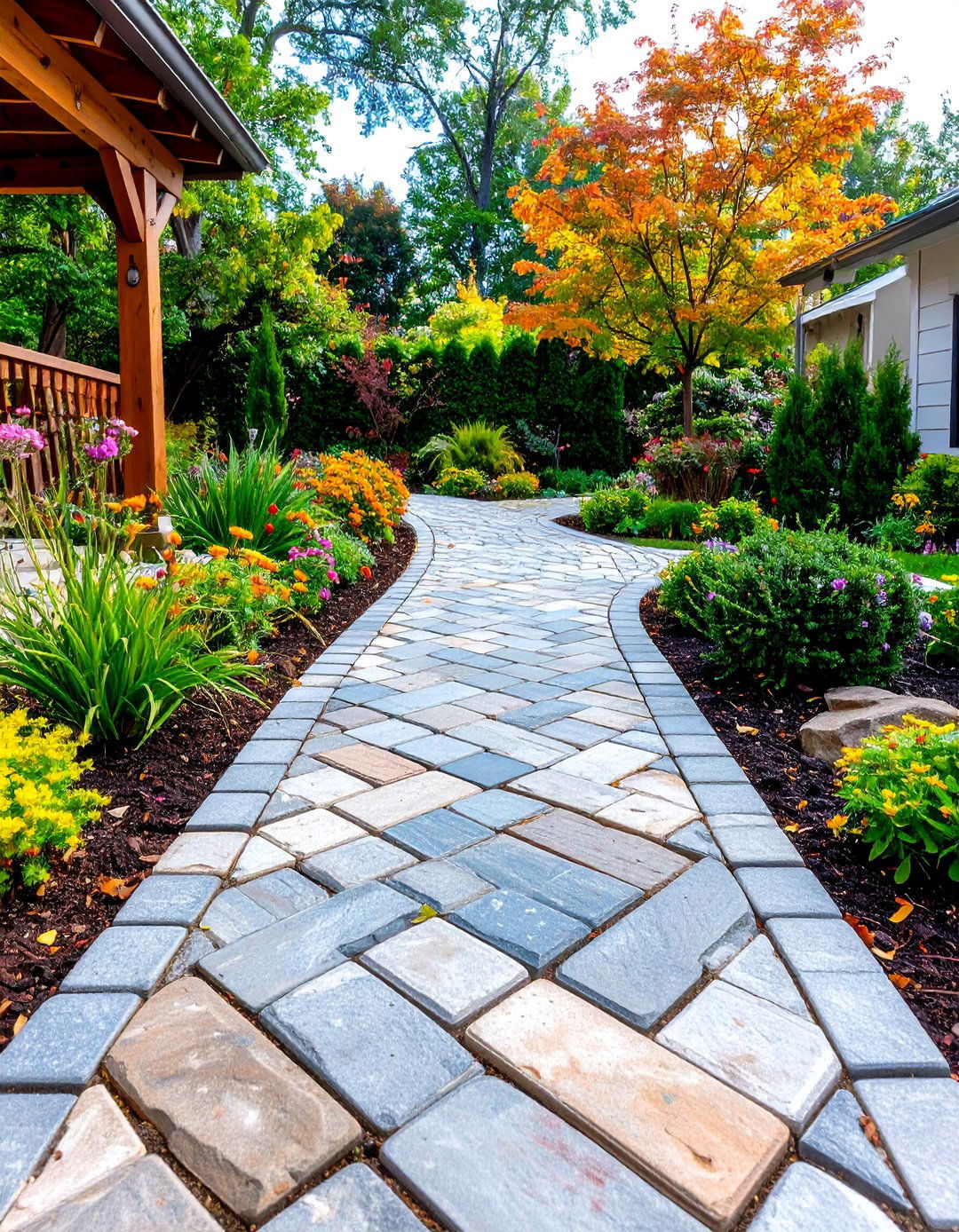
The herringbone pattern remains the most popular cobblestone walkway design, featuring rectangular stones arranged in a distinctive zigzag formation. This interlocking layout creates exceptional structural stability, making it ideal for high-traffic areas and driveways where durability is paramount. The aesthetic versatility allows mixing colors and materials while ensuring durability and low maintenance, enhancing patios and driveways with sophistication. Installation involves placing each stone at either 45-degree or 90-degree angles to its neighbor, creating the characteristic fishbone appearance. The pattern's tight weave prevents shifting and spreading over time, while its visual impact adds timeless elegance to any property. This design works exceptionally well with both natural granite and modern concrete cobblestones.
2. Fan Pattern Cobblestone Walkway
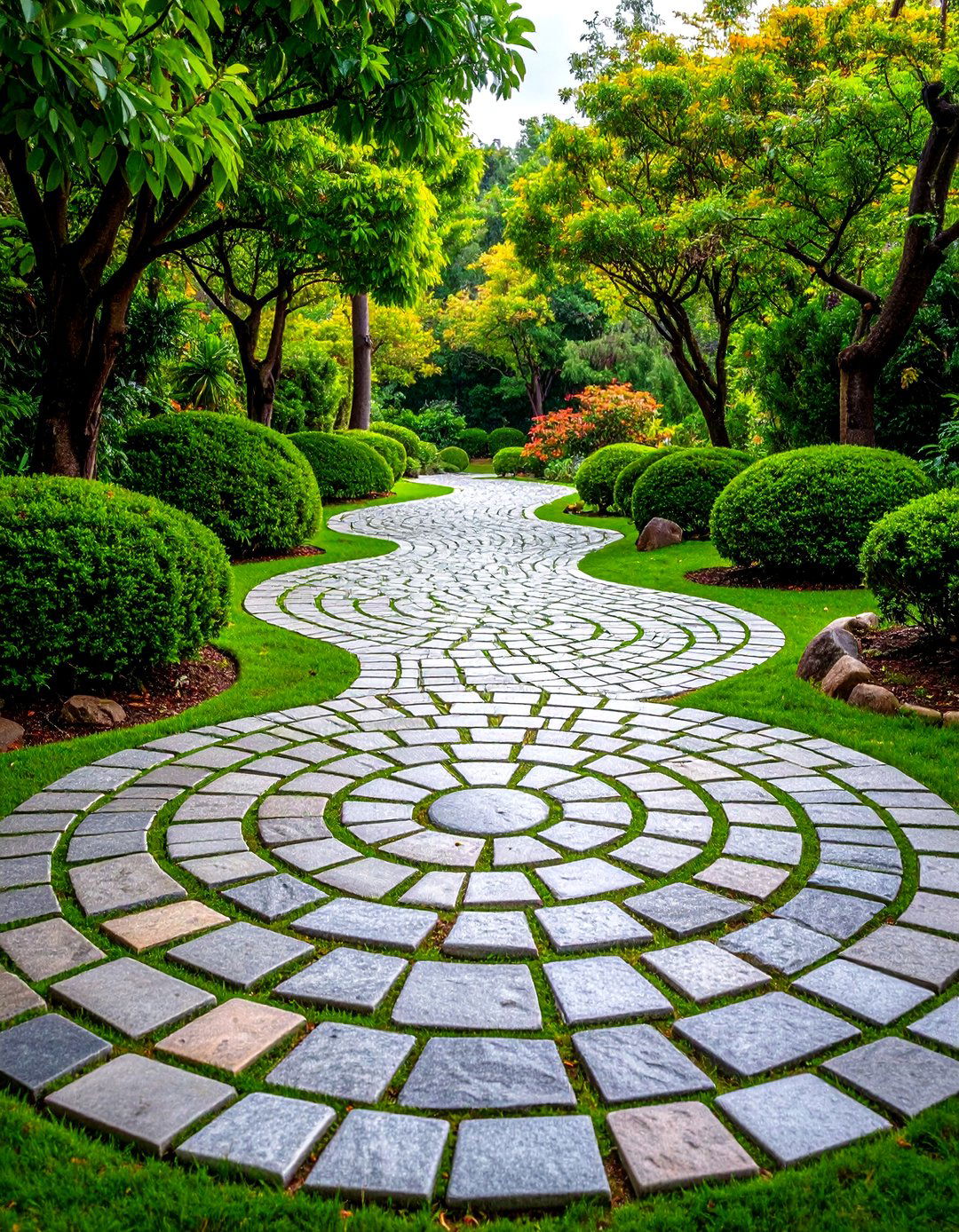
Fan pattern cobblestone features individual stones arranged in a circular pattern, with stones gradually radiating outwards from a central point. This elegant design creates striking arcs that add European sophistication to entrances and gathering areas. The specialized cobble creates striking layouts of interlocking arcs with softened, rounded "bread loaf" tops. Each fan typically consists of 38 uniquely shaped cobbles, making installation precise yet manageable for DIY enthusiasts. The pattern works beautifully as accent features within larger walkway designs or as standalone focal points near doorways. Fan patterns are particularly effective when using contrasting stone colors, creating dramatic visual interest that guides visitors naturally along the path while enhancing the overall landscape architecture.
3. Circular Design Cobblestone Walkway
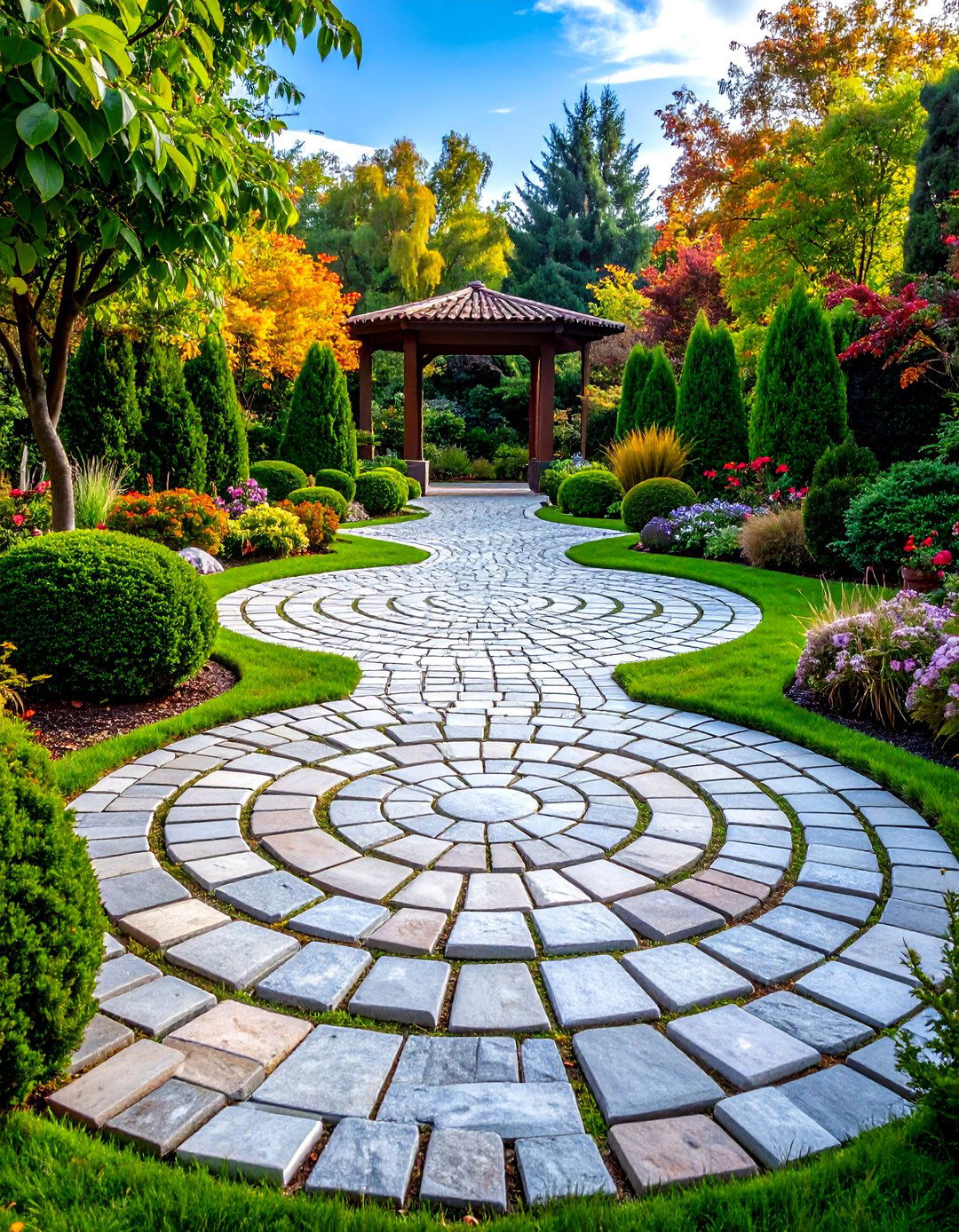
Circular cobblestone walkway features create natural gathering spaces and serve as stunning focal points within garden landscapes. These designs feature pavers arranged in a circular or fan-like formation, often used to create a focal point in outdoor living areas. The circular pattern can incorporate multiple ring sizes, typically featuring 6-inch, 9-inch, and 14-inch diameter rings that create concentric circles of visual interest. This design naturally encourages social interaction and provides perfect spaces for outdoor furniture placement. Cobble Circle forms a distinctive circular pattern that's perfect as a central design element or focal point for courtyards and patios. Installation requires careful planning to ensure proper spacing and alignment, but the resulting effect transforms ordinary pathways into extraordinary outdoor experiences.
4. Modern Grid Pattern Cobblestone Walkway
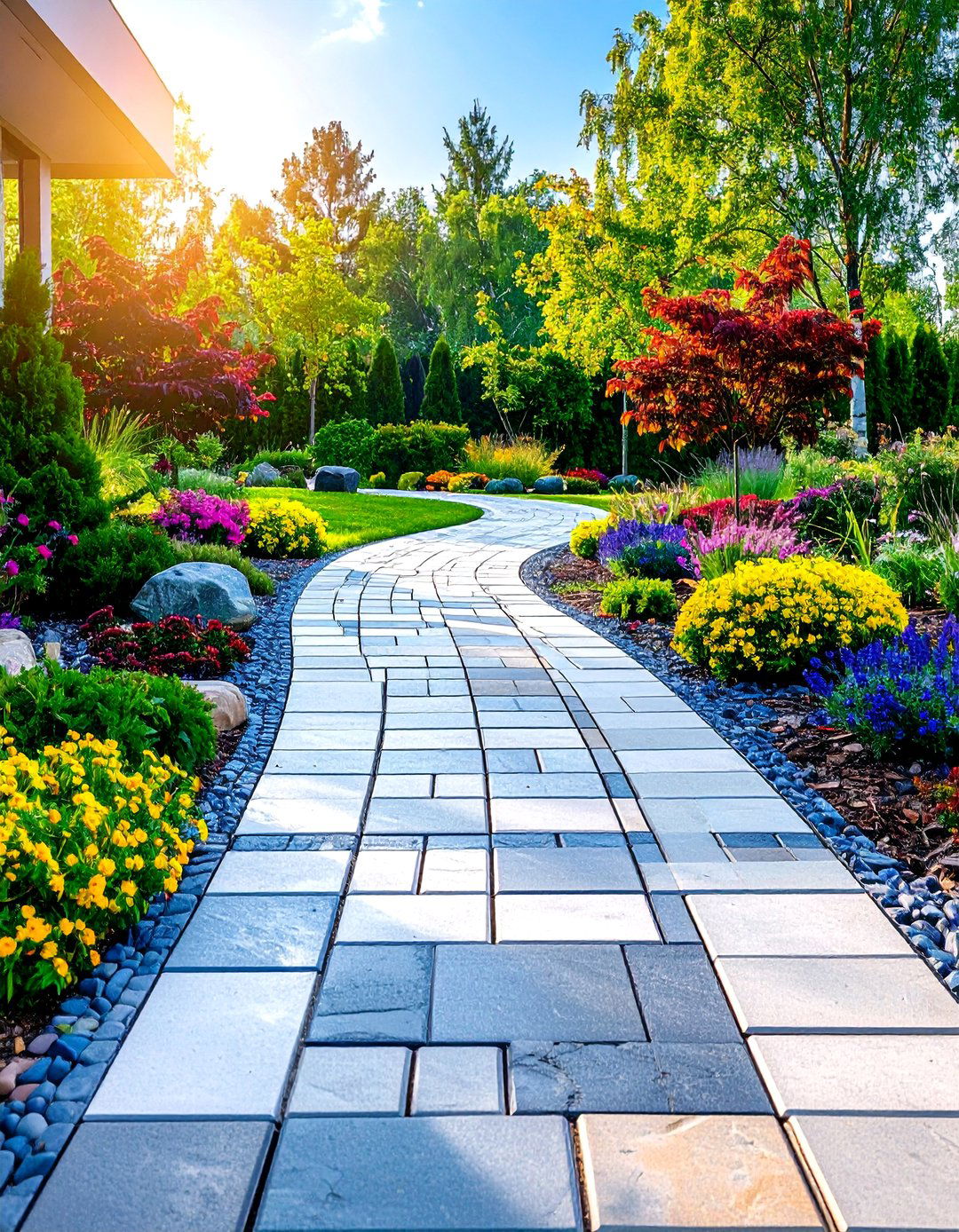
Grid pattern cobblestone walkways offer contemporary appeal through clean lines and geometric precision. By incorporating textured surfaces and varying stone sizes, this creates design contrasts that elevate the overall aesthetic while enhancing durability and simplifying maintenance. This modern approach features uniform spacing between stones, creating a checkerboard effect that complements minimalist landscape designs. The grid pattern works particularly well with square or rectangular cobblestones in consistent sizes, allowing for precise installation and striking visual impact. Color variations can be incorporated by alternating light and dark stones, creating dynamic patterns that enhance contemporary architecture. This design proves ideal for modern homes seeking sophisticated outdoor spaces that balance traditional materials with current design trends.
5. Permeable Cobblestone Walkway
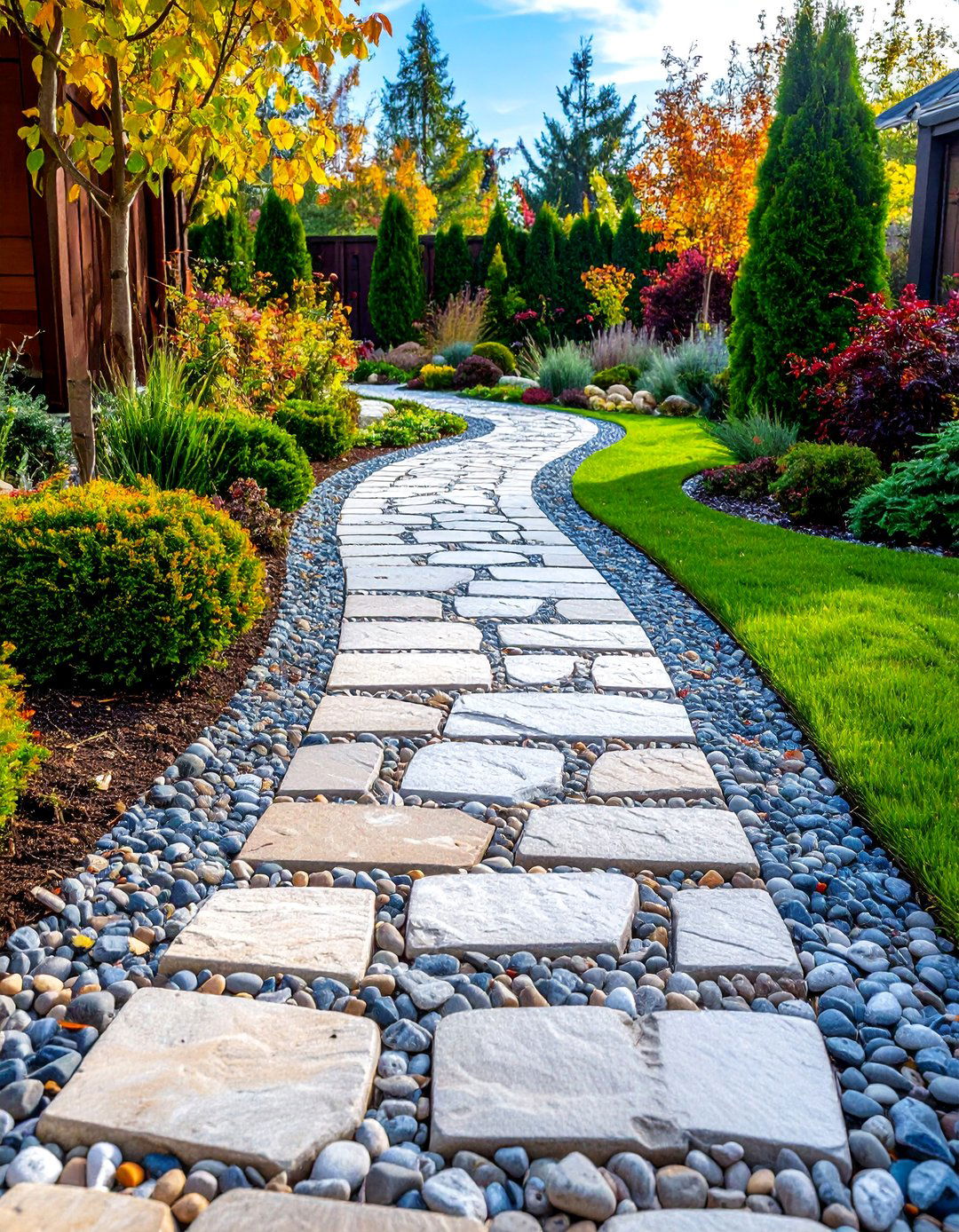
Permeable cobblestone walkway serves double duty as part of required parking space while providing environmental benefits. This eco-friendly design allows rainwater to infiltrate naturally through wider joints between stones, reducing runoff and supporting groundwater recharge. This type of walkway allows water to seep through into the ground, reducing runoff and helping to recharge groundwater, typically involving laying stones with wider gaps filled with gravel or special permeable joint fillers. Installation requires specialized base preparation with gravel layers that facilitate drainage. The design proves particularly valuable in areas prone to flooding or where water conservation is prioritized. Modern permeable systems can achieve 98% permeability while maintaining durability and aesthetic appeal, making them excellent choices for environmentally conscious homeowners.
6. Traditional European Cobblestone Walkway

Traditional European cobblestone walkways recreate authentic old-world charm using reclaimed stones with natural patina and weathered character. Historic cobblestone patterns are similar to brick patterns, featuring classic running bond arrangements with square and rectangular cobbles resembling Flemish bond patterns. These authentic installations often feature varied stone sizes that require careful fitting, creating the characteristic irregular appearance of centuries-old European streets. Antique materials are reclaimed from historic streets and buildings, providing genuine authenticity. The natural weathering and color variations in reclaimed stones create unique character that cannot be replicated with new materials. Installation typically involves sand-setting techniques that allow for slight irregularities, enhancing the pathway's authentic historical appearance while providing modern durability and functionality.
7. Mixed Material Cobblestone Walkway
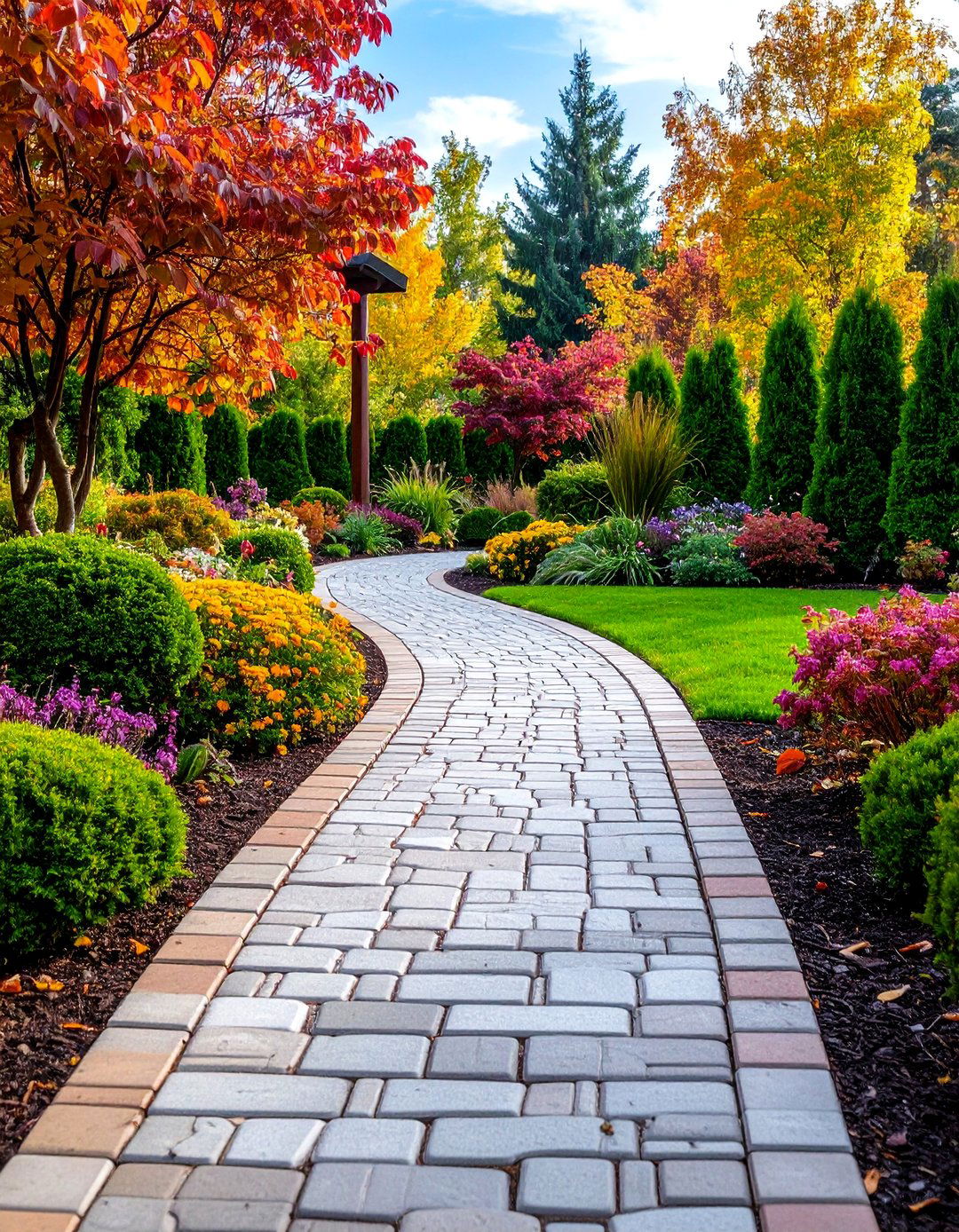
Mixed material cobblestone walkways combine traditional stones with complementary materials like brick, concrete pavers, or natural flagstone for unique visual appeal. Combining cobblestone with brick creates striking borders that enhance garden beauty while adding functional benefits, with contrasting colors creating depth and charm. This approach allows creative pattern development, such as using larger pavers as primary stepping surfaces with cobblestone filling or accent strips. Different paver styles or poured concrete can be united using the same border materials. The material combination offers design flexibility while potentially reducing costs and installation complexity. Mixed materials work particularly well for creating transition zones between different outdoor spaces, providing visual continuity while maintaining distinct character for each area. Color coordination ensures harmonious blending between materials.
8. Bordered Cobblestone Walkway
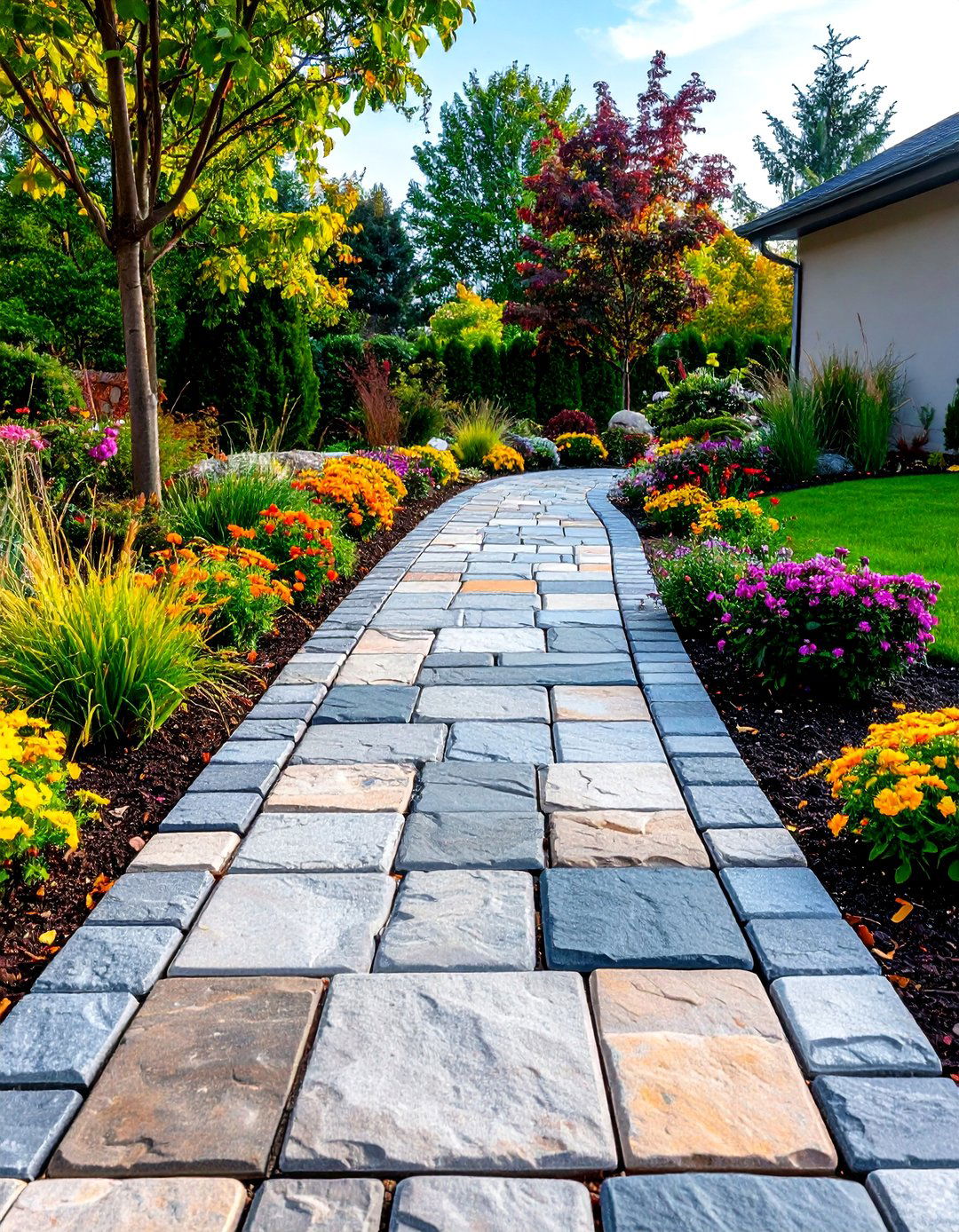
Bordered cobblestone walkways feature distinct edge treatments that define pathway boundaries and enhance overall design sophistication. Cobblestone borders help define space while adding beautiful design details, creating excellent ways to blend new walkways with pre-existing porches or patios. Border options include raised brick edges, granite curbing, or soldier courses of contrasting pavers that create clean, professional appearances. Granite edging can add visual interest by creating decorative borders around walkways while functioning as root barriers between plants and hardscapes. Professional installation ensures proper height relationships between pathway surface and border materials. These borders provide practical benefits by containing loose materials, preventing grass encroachment, and creating maintenance edges that simplify landscape care while significantly enhancing curb appeal and property value.
9. Curved Cobblestone Walkway
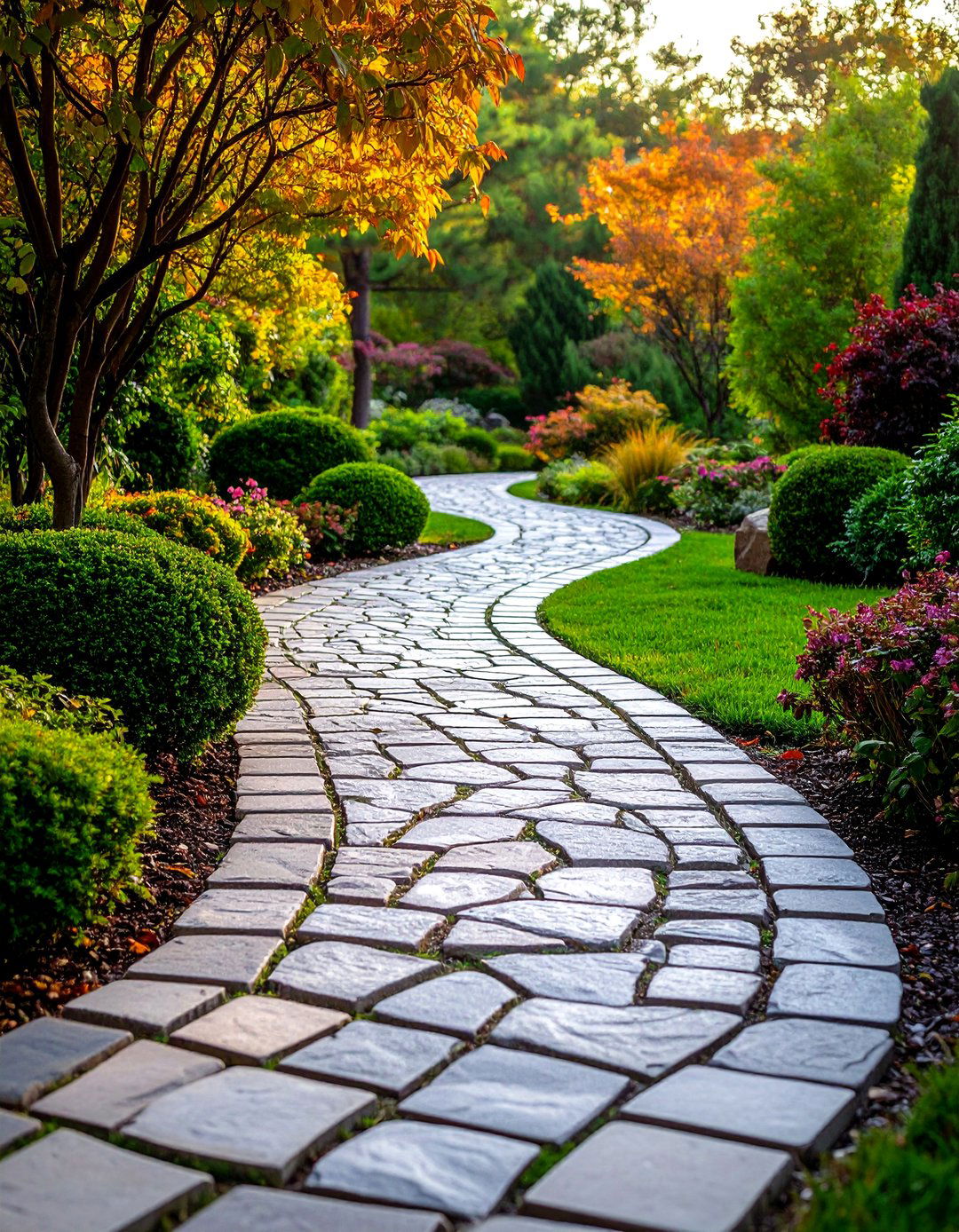
Curved cobblestone walkways create organic, flowing paths that complement natural landscape contours and garden designs. Curving paths encourage visitors to stay on the walkway, which is ideal when installing meandering routes through garden spaces. The installation process requires careful planning to maintain consistent width and smooth transitions while accommodating the natural curvature. Gently curving cobblestone paths give cobblestone a romantic or homey feel, creating beautiful custom designs. Curved designs work exceptionally well in cottage gardens, woodland settings, or any landscape seeking to emulate natural pathways. The organic flow creates visual interest and encourages exploration while providing practical routing between different garden areas. Professional layout techniques ensure proper drainage and structural integrity throughout the curved sections, maintaining both beauty and functionality.
10. Stepping Stone Style Cobblestone Walkway
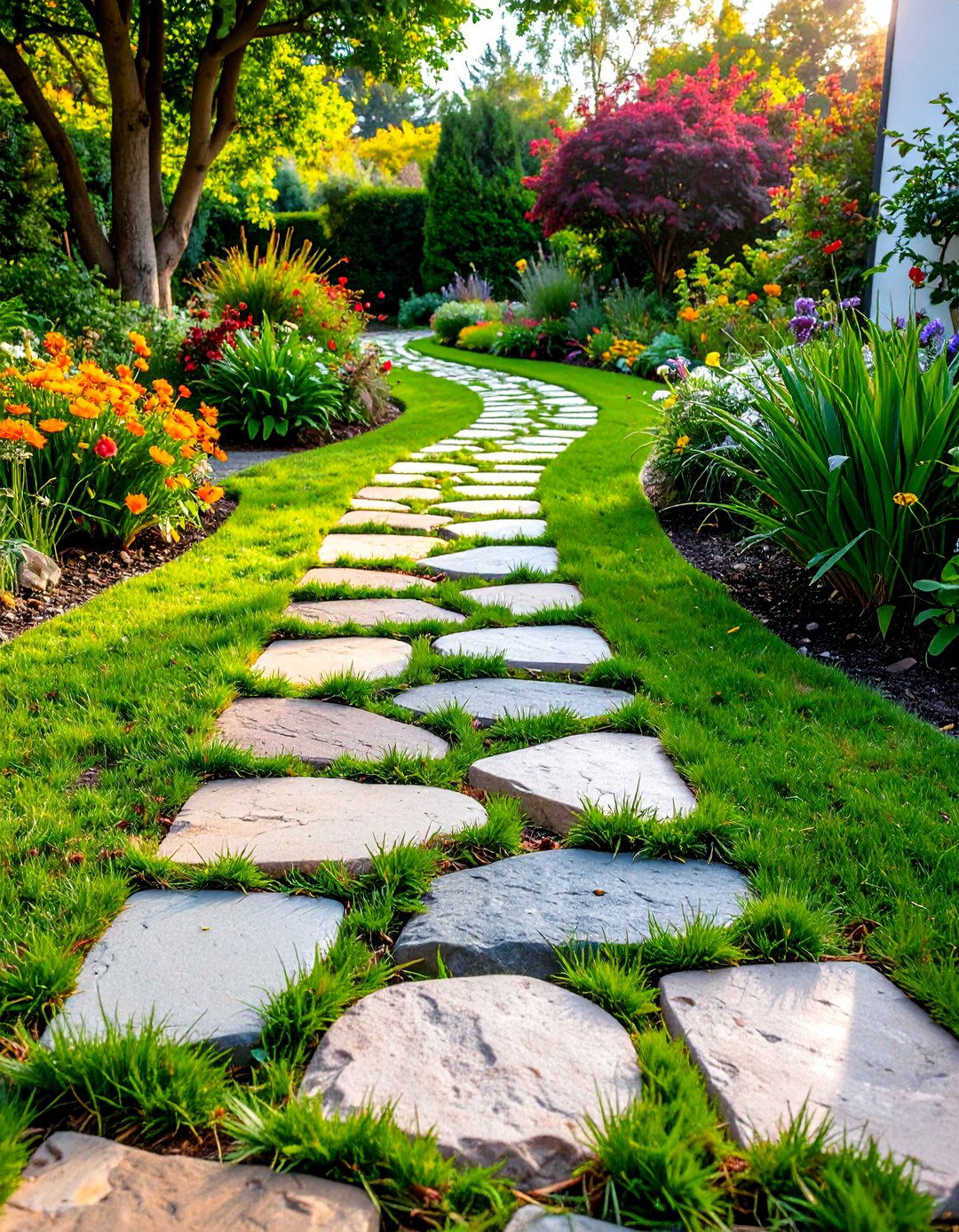
Stepping stone style cobblestone walkways feature individual stones or small groupings placed at comfortable walking intervals with ground cover between them. These individual stones can be placed at comfortable stepping distances, allowing grass or ground cover to grow between them, creating a more natural, less formal look perfect for cottage gardens. This design reduces material costs while creating charming, informal pathways that blend seamlessly with garden plantings. Installation involves careful spacing calculations to ensure comfortable walking stride length for all users. The gaps between stones can be planted with low-growing herbs, moss, or decorative grasses that enhance the natural appearance. This approach works particularly well in casual garden settings where formal pathways might appear too rigid or imposing. Maintenance involves occasional plant trimming and stone releveling.
11. Two-Tone Cobblestone Walkway
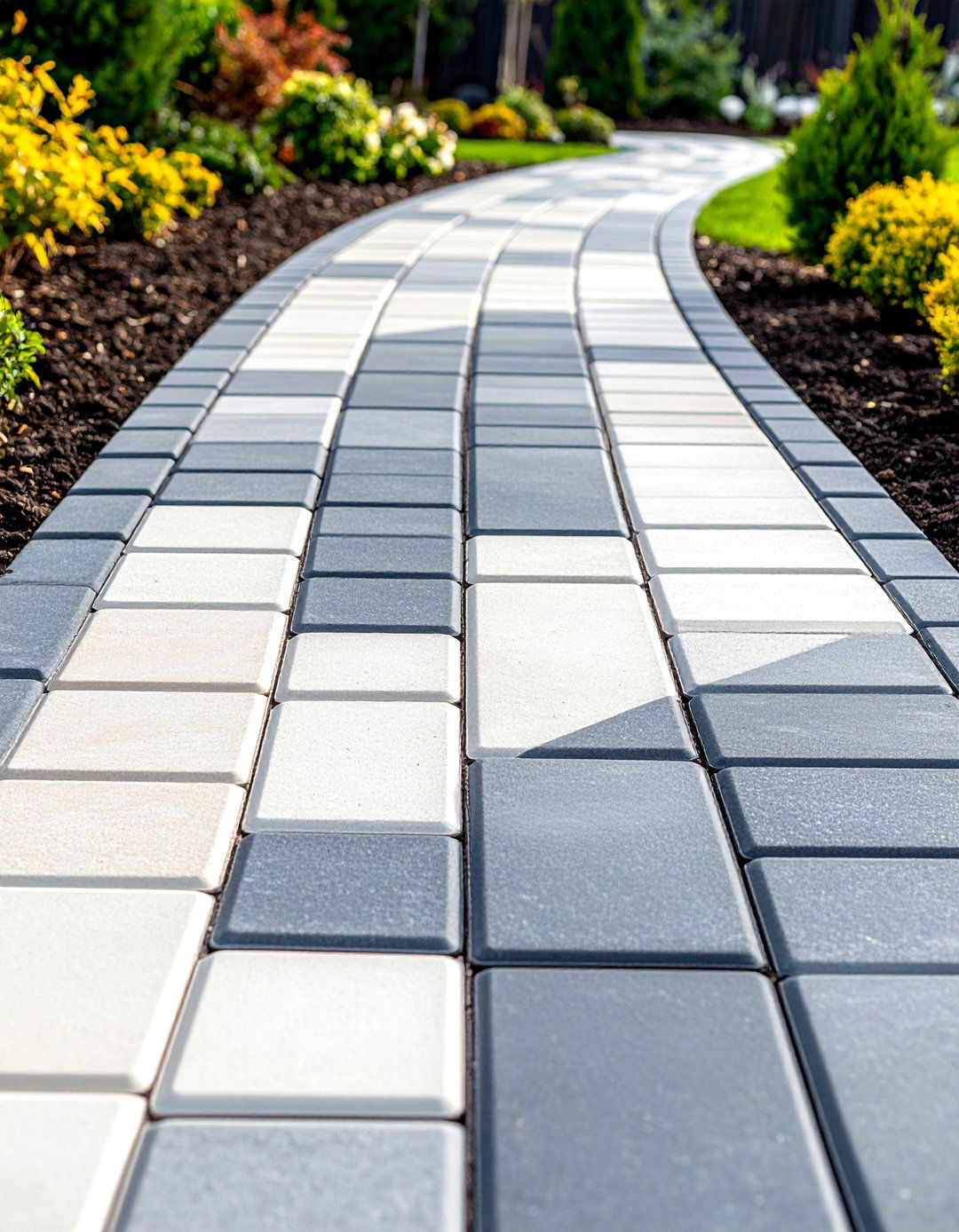
Two-tone cobblestone walkways utilize contrasting stone colors to create striking visual patterns and enhance pathway definition. Using cobblestone in a fan pattern with two complementary stone colors creates beautiful custom accents, while herringbone patterns using traditional colors add more conventional feels. Popular combinations include gray granite with warm sandstone, or charcoal with cream-colored stones that create dramatic contrast. The color selection should complement existing architecture and landscape elements while providing sufficient contrast for visual impact. Installation requires careful planning to ensure consistent color distribution and pattern alignment. Two-tone designs work exceptionally well for creating borders, accent strips, or geometric patterns within larger walkway areas. This approach allows homeowners to achieve custom appearances while maintaining the classic appeal of traditional cobblestone materials and installation techniques.
12. Geometric Accent Cobblestone Walkway
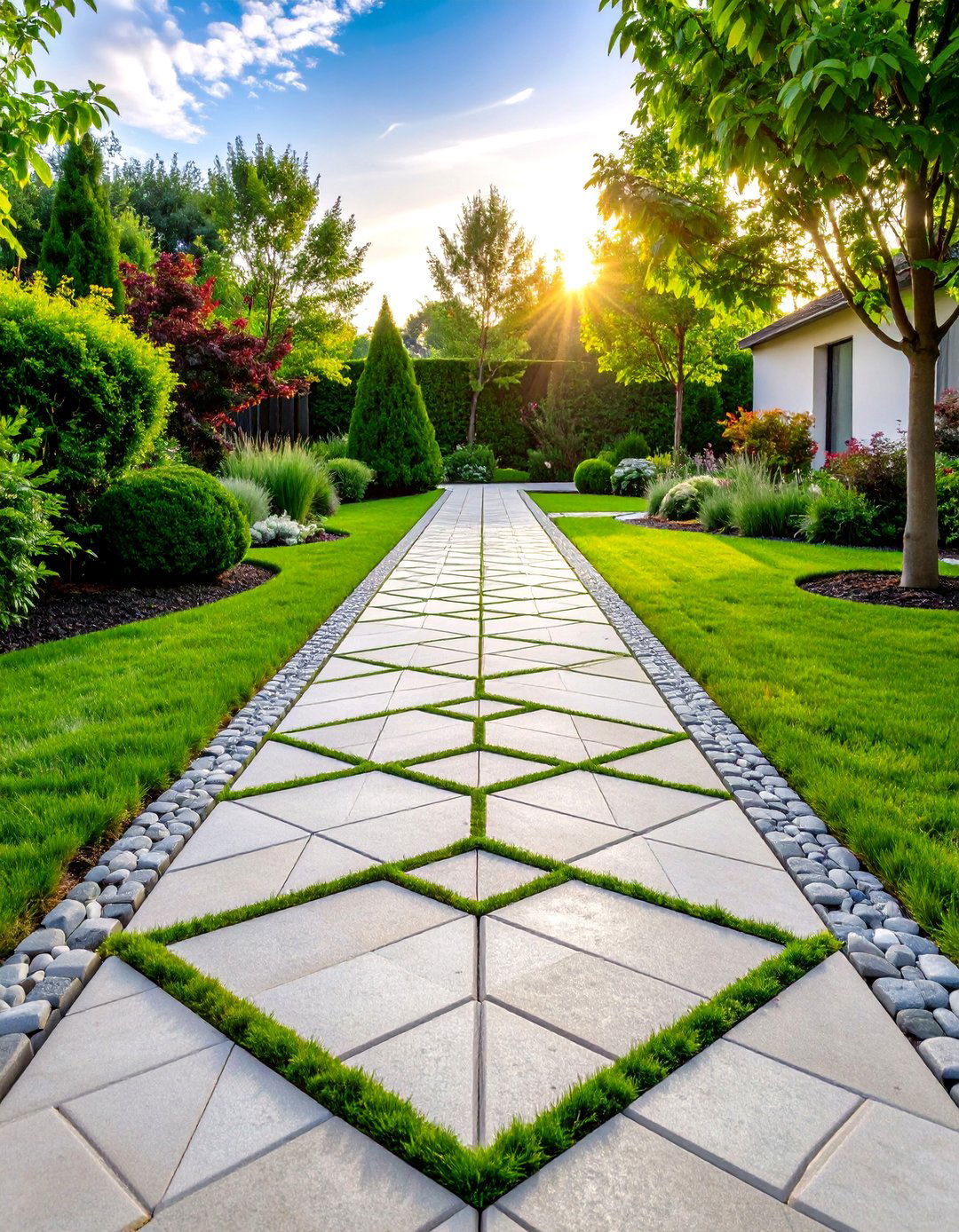
Geometric accent cobblestone walkways incorporate modern design elements through precise patterns and strategic color placement. Laying geometric pavers in straight lines adheres to modern design principles, with loose cobblestones filling gaps to create permeable pathways. These designs feature clean lines, sharp angles, and mathematical precision that complement contemporary architecture. The smaller stones enable a large variety of motifs and arrangements that are challenging or impossible with larger bricks and pavers. Installation requires precise measurements and careful attention to alignment and spacing. Geometric patterns can include diamonds, squares, triangles, or more complex mathematical designs that create stunning visual effects. These walkways work particularly well with modern homes or minimalist landscape designs where traditional organic patterns might appear out of place. Professional installation ensures geometric accuracy and long-term structural integrity.
13. Natural Edge Cobblestone Walkway
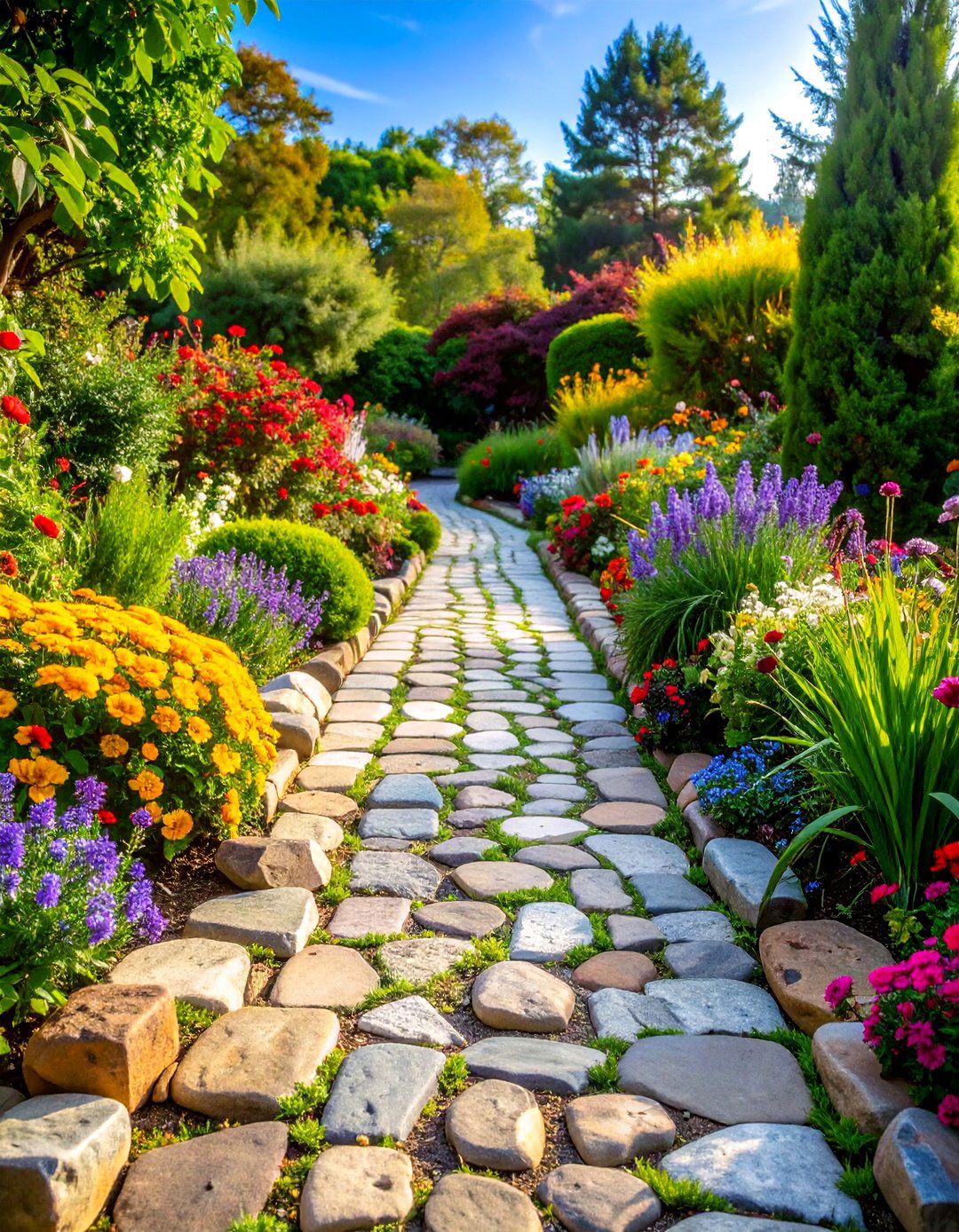
Natural edge cobblestone walkways feature organic, irregular boundaries that blend seamlessly with surrounding landscape plantings. Natural borders utilize native plants that simply hug the path border, creating less formal edges that encourage natural integration. This design approach eliminates rigid edging materials in favor of planted borders that soften the pathway's appearance and create gradual transitions between hardscape and landscape. Installation focuses on creating gentle, flowing edge lines that complement natural terrain and existing vegetation. Natural stone borders work well with cottage gardens or traditional landscapes, with gaps between stones filled with soil and small groundcovers for softer looks. Plant selection should include low-growing, non-invasive species that will naturally contain pathway boundaries while providing seasonal color and texture. This approach requires ongoing maintenance but creates uniquely beautiful, naturalistic pathways.
14. Tumbled Finish Cobblestone Walkway
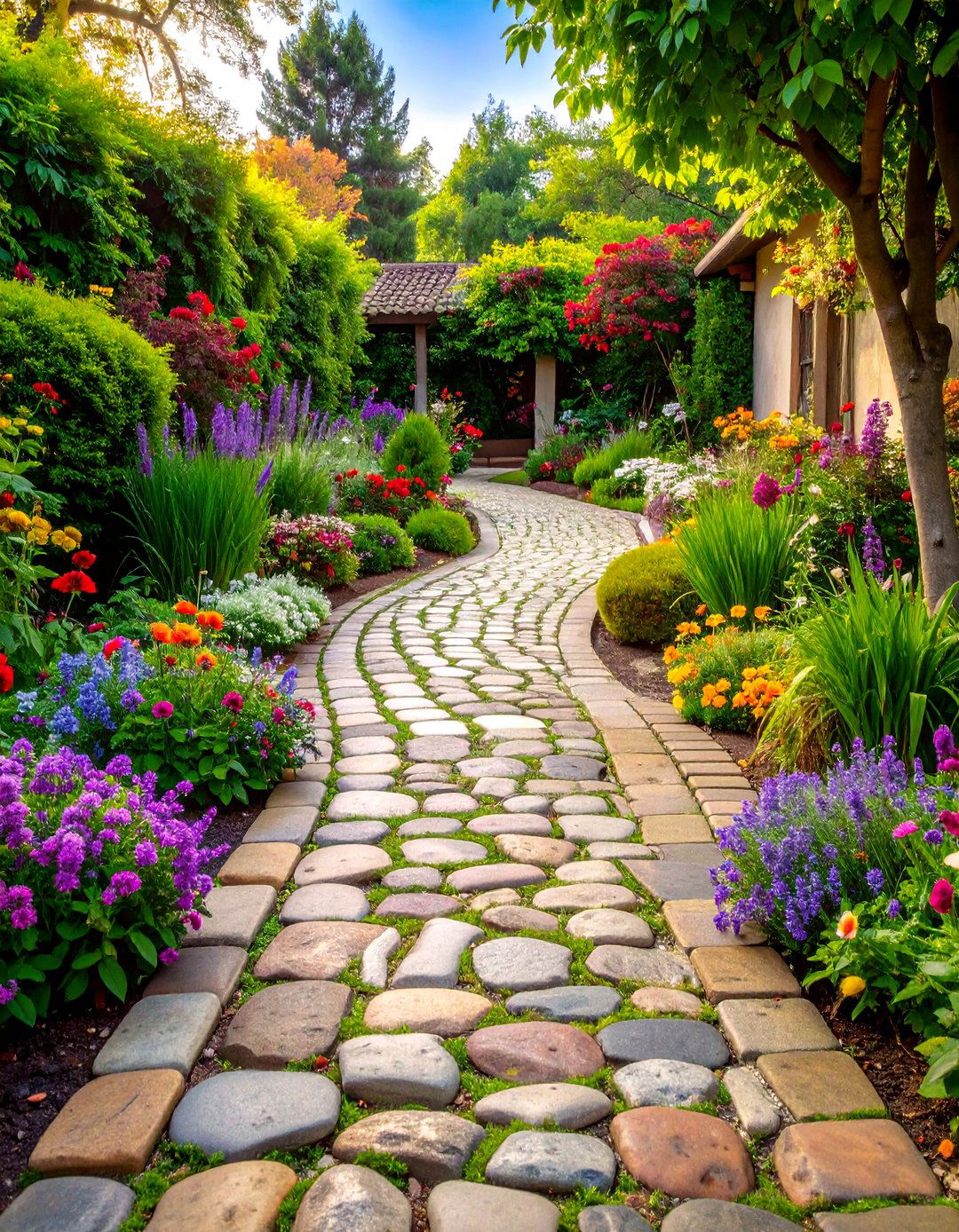
Tumbled finish cobblestone walkways feature stones with softened edges and weathered surfaces that create authentic antique character. These pavers have an old-world, tumbled feel with softened, rounded surfaces that feel right at home with period architecture. The tumbling process involves mechanical aging that removes sharp edges and creates natural-looking wear patterns, resulting in safer, more comfortable walking surfaces. This finish particularly suits historic homes, cottage gardens, or any setting where authentic aged appearance is desired. Traditional finish with pressed edges and dimpled surfaces creates unmistakable old-world look and feel. Installation requires careful attention to surface variations while maintaining overall pathway functionality. The tumbled finish provides excellent traction in wet conditions while creating visually appealing texture variations that enhance the overall pathway character and complement traditional landscape designs.
15. Wide Border Cobblestone Walkway
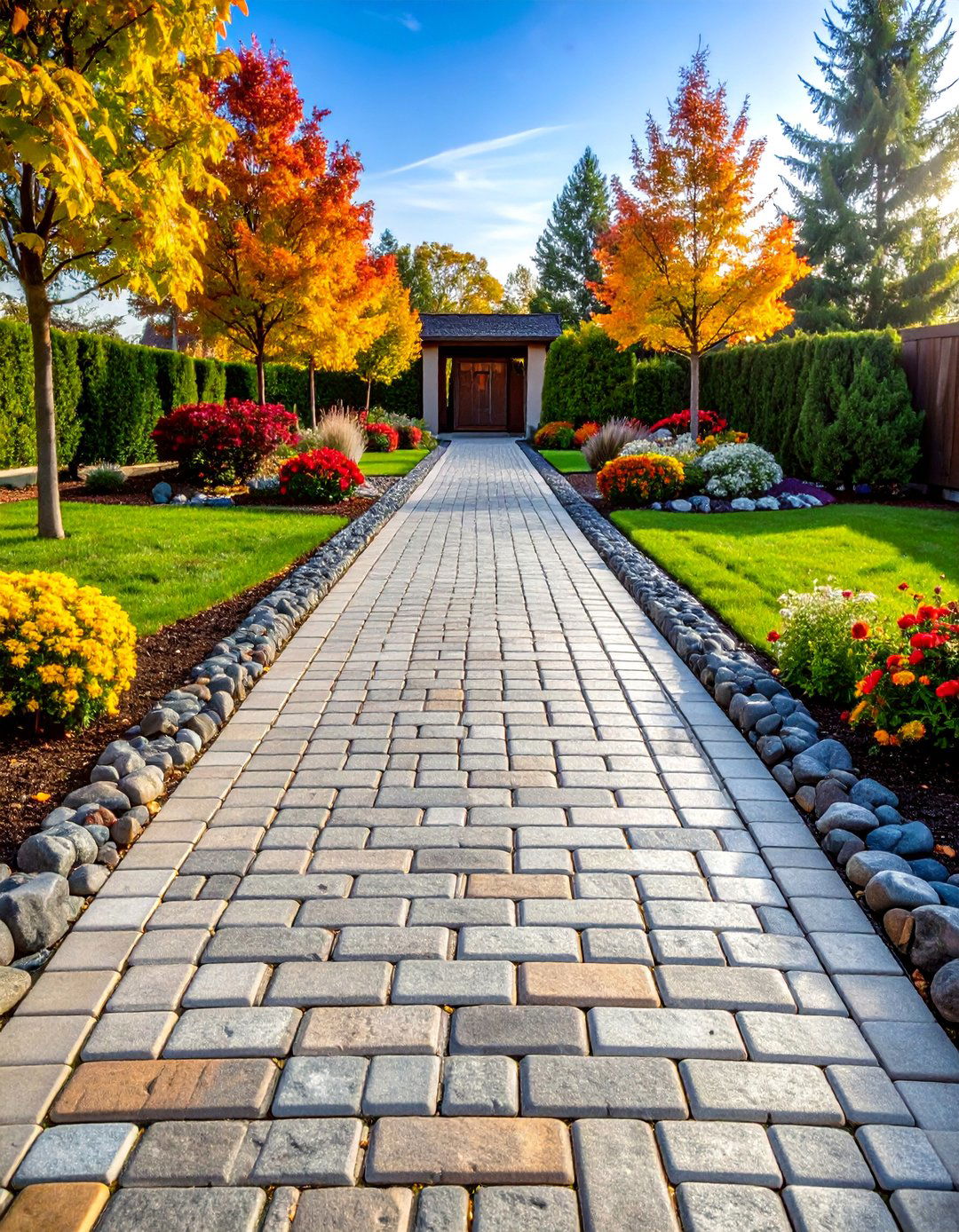
Wide border cobblestone walkways feature substantial edge treatments that create commanding presence and enhanced functionality. Wide paved borders using granite cobblestones provide outstanding durability, functionality, and appearance for driveway aprons and planter bed edges. These designs typically incorporate borders measuring 12-24 inches wide, creating significant visual impact while providing practical benefits like vehicle access areas or maintenance strips. Wide borders can accommodate multiple rows of cobblestones in contrasting colors or patterns, creating complex design opportunities. Installation requires substantial excavation and base preparation to support the increased material weight and traffic loads. Wide formal walkways tend to be straighter than informal garden paths, often installed as front entrances using similarly sized cobbles in color ranges matching house façades. These walkways work exceptionally well for grand entrances or primary circulation routes.
16. Rosette Feature Cobblestone Walkway
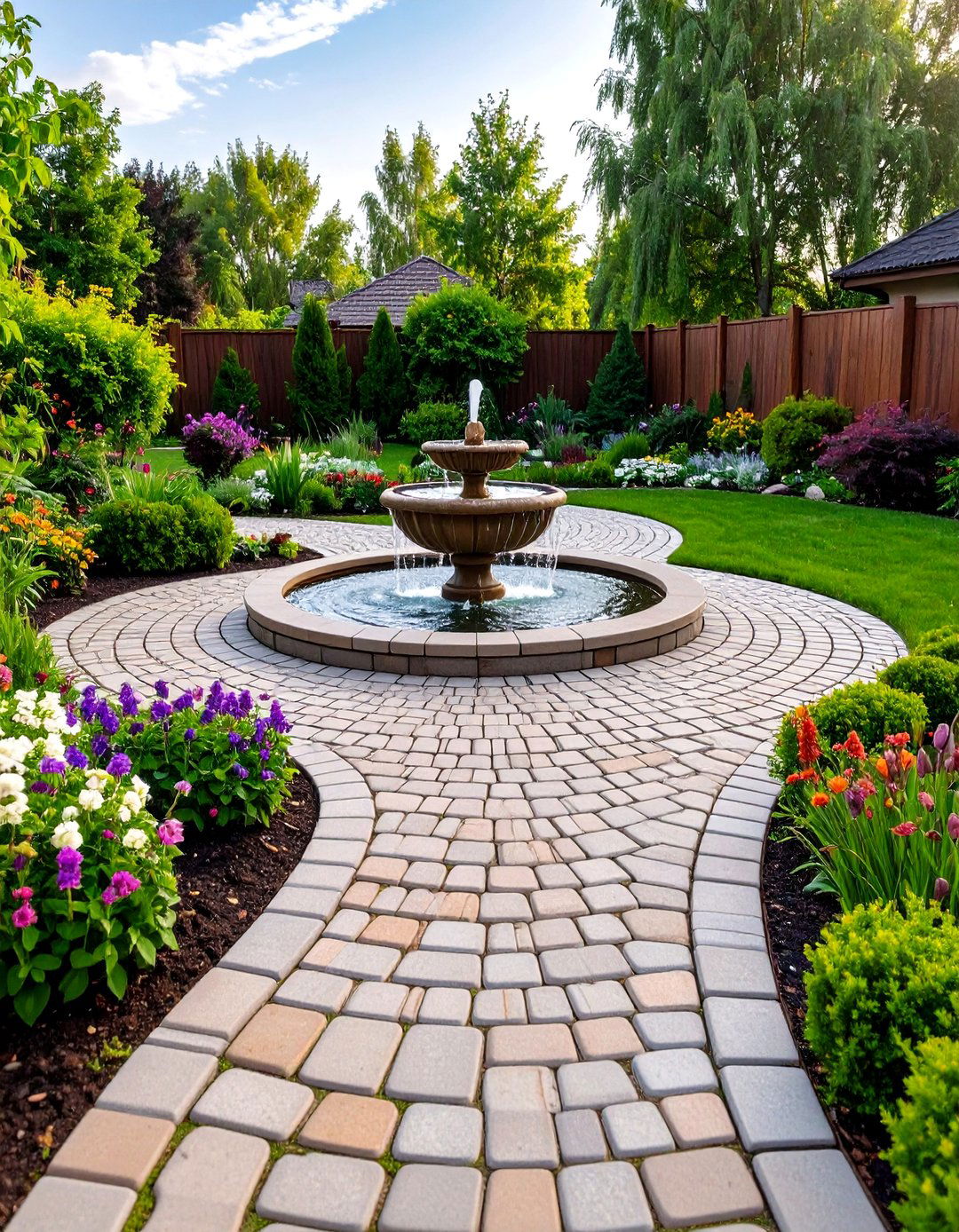
Rosette feature cobblestone walkways incorporate circular widened areas that serve as focal points and gathering spaces along pathway routes. Rosettes are created by widening part of the pathway into a circle, with centers providing space for beautiful landscaping or water fountain installations. These features break up long straight pathways while providing natural stopping points for rest or conversation. The rosette design can accommodate benches, planters, or sculptural elements that enhance the overall landscape composition. Installation requires careful integration with the main pathway to ensure smooth transitions and proper drainage. Circular patterns are often used to create focal points in outdoor living areas and can be enhanced with different colors or textures. Rosettes work particularly well at pathway intersections, entrance areas, or points where views should be emphasized. Professional design ensures proper proportional relationships between rosette size and pathway width.
17. Running Bond Cobblestone Walkway
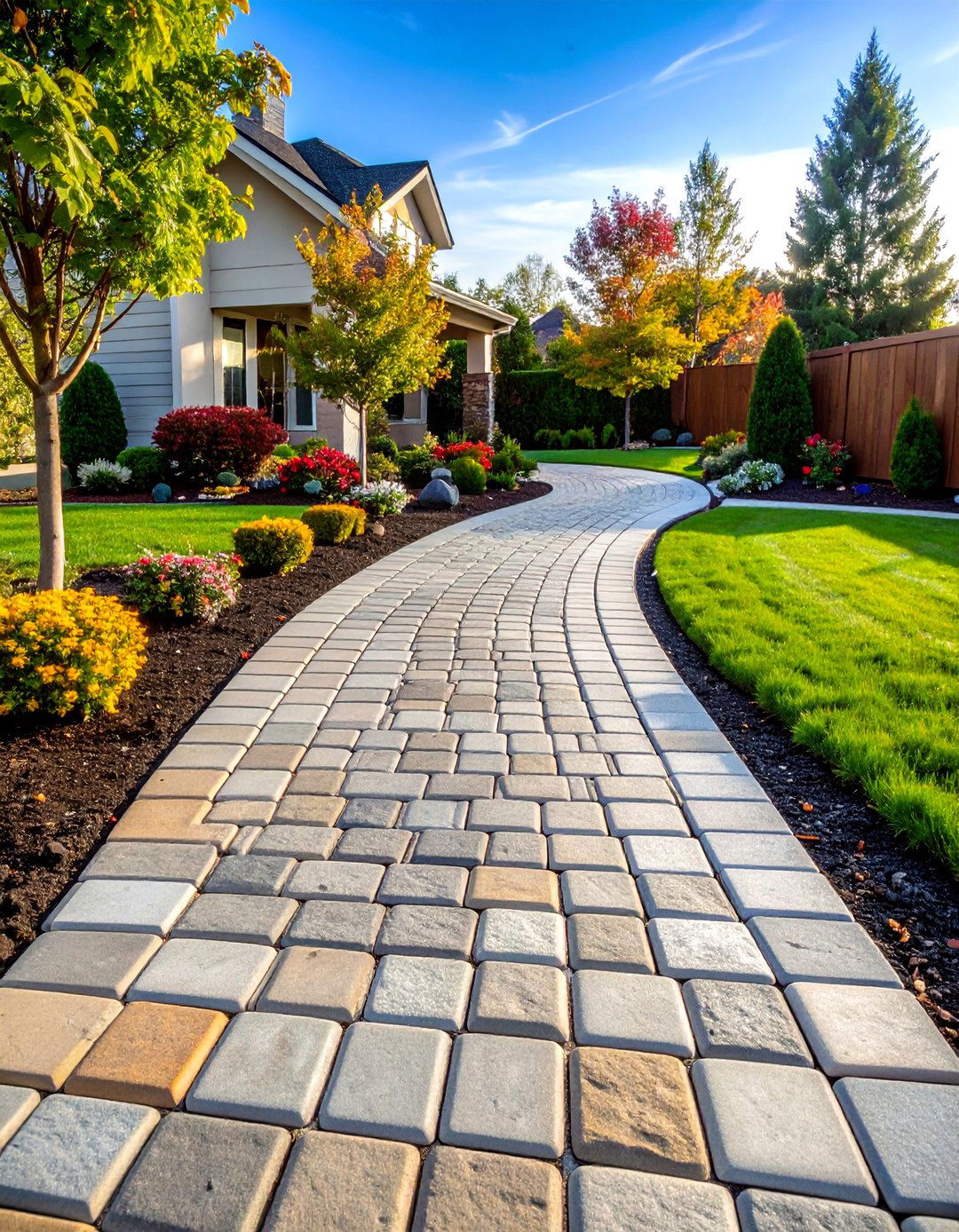
Running bond cobblestone walkways feature offset joint patterns that create strong, durable surfaces with classic appeal. Cobblestone patterns are similar to brick patterns in that you can do a classic running bond arrangement. This pattern involves placing each stone so that joints in adjacent rows are offset by half the stone length, creating the characteristic staggered appearance. The running bond provides excellent structural integrity by preventing continuous joint lines that could weaken the pathway. Running bonds may be used for residential driveways, though herringbone patterns provide the greatest degree of interlock for heavy traffic areas. Installation requires consistent stone sizing and careful attention to joint alignment throughout the pathway length. This pattern works well with both rectangular and square cobblestones, offering versatility in material selection while maintaining traditional construction principles that ensure long-term durability and stability.
18. Multi-Size Cobblestone Walkway
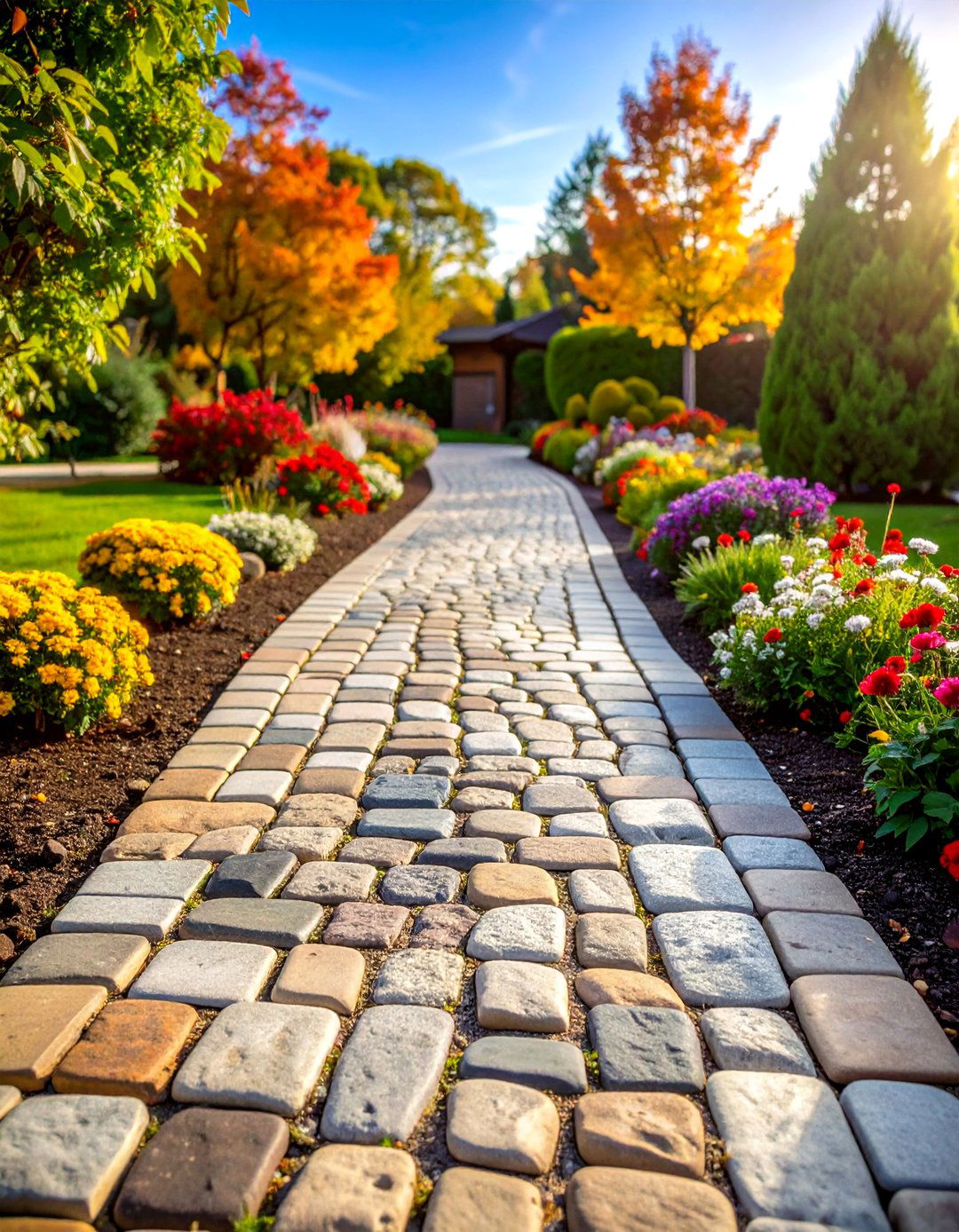
Multi-size cobblestone walkways combine different stone dimensions to create natural, varied appearances that replicate historic European streets. Historic cobblestone walkways frequently had variety in stone sizes, with some being somewhat smaller than others, requiring jigsaw-fitting or additional masonry to fill spaces. This approach creates authentic character through natural size variations that avoid monotonous regularity. Installation requires skilled craftsmanship to fit irregularly sized stones while maintaining stable, level surfaces. Traditional style pathways can have natural edges or borders composed of cobbles with more regular shapes for containment. The varied sizing creates visual texture and interest while accommodating different stone types or reclaimed materials. Professional installation ensures proper base preparation and joint filling techniques that accommodate size variations while providing long-term stability and attractive appearance that enhances property character.
19. Contemporary Linear Cobblestone Walkway
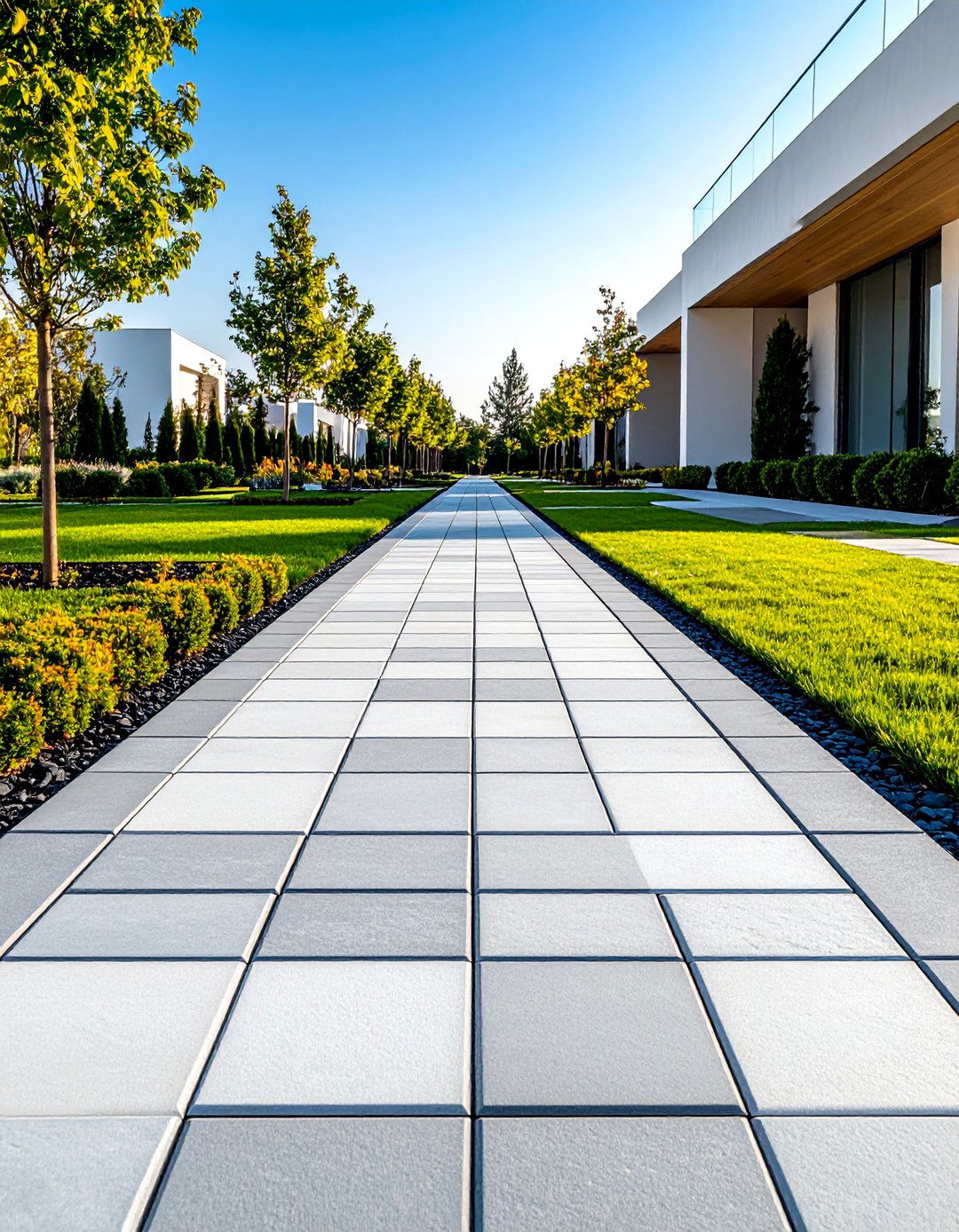
Contemporary linear cobblestone walkways emphasize clean, straight lines and minimal ornamentation for modern aesthetic appeal. Straight line aesthetic with geometric designs, especially when paired with concrete pavers, creates stunning contrasts using different hues for personalized touches. These designs feature precise alignment, consistent joint spacing, and often monochromatic color schemes that complement modern architecture. Modern style involves straight lines and tight patterns, with cobblestones used in several ways to meet contemporary ideas. Installation requires exceptional attention to dimensional accuracy and surface leveling to achieve the desired contemporary appearance. Linear designs work particularly well with geometric landscape layouts, minimalist plantings, and contemporary outdoor furniture. The pathway width and proportions should relate harmoniously to building architecture and surrounding hardscape elements. Professional installation ensures the precision necessary for successful contemporary design execution.
20. Garden Integrated Cobblestone Walkway
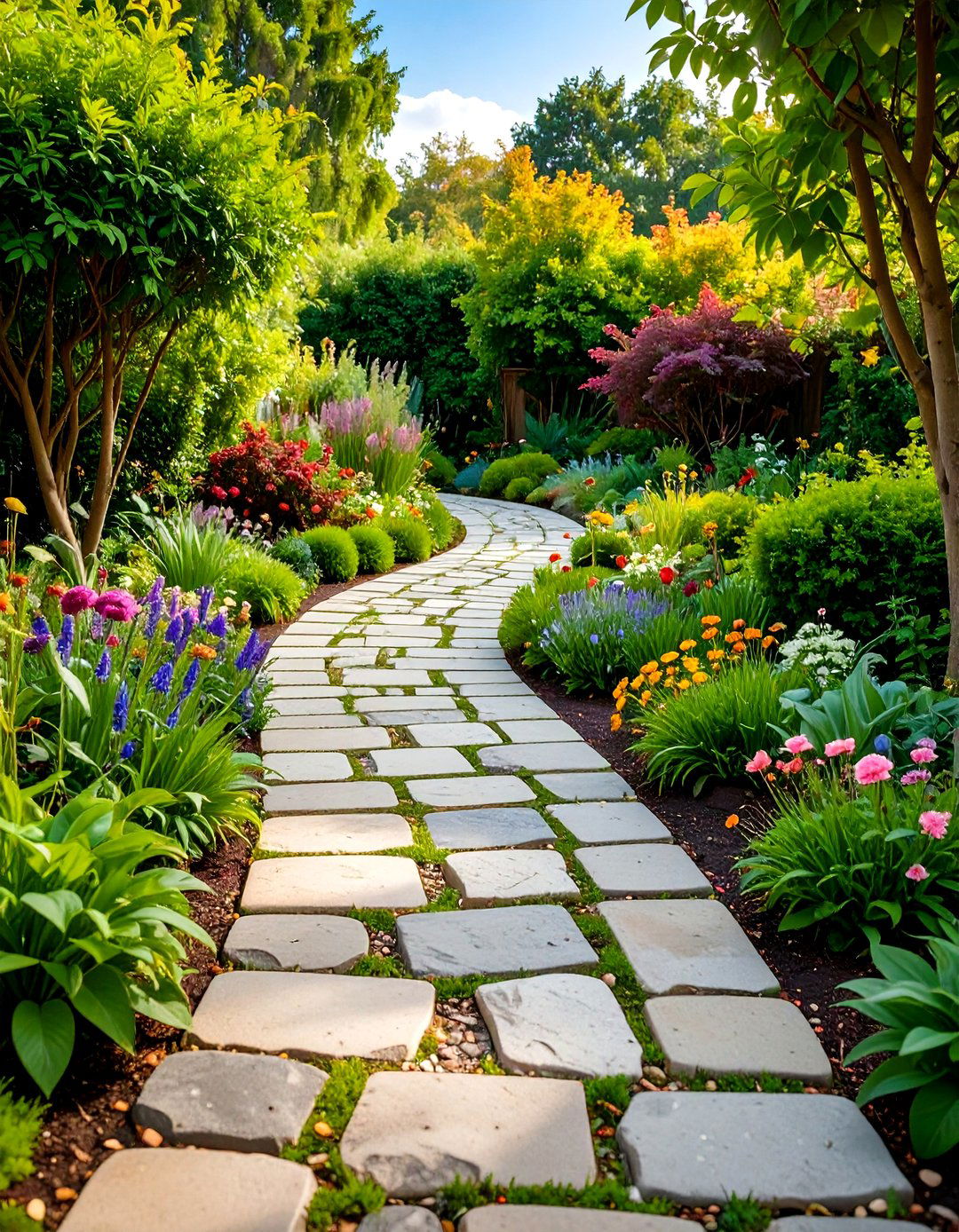
Garden integrated cobblestone walkways feature strategic plant placements within and alongside stone layouts to create seamless landscape integration. Alternating stone pavers with strips of grass or low-growing ground cover creates interesting visual patterns while allowing better water absorption, working particularly well in modern or minimalist garden settings. This design incorporates planting pockets, herb strips, or decorative grasses between stone sections. Plants like boxwood offer structure while lamb's ears provide texture, creating inviting atmospheres that enhance both beauty and ecological balance. Installation requires coordination between hardscape and landscape elements to ensure proper growing conditions and drainage. Plant selection should consider traffic tolerance, maintenance requirements, and seasonal appearance. This approach creates dynamic, living pathways that change with seasons while providing traditional cobblestone durability. Professional design ensures proper soil depth, drainage, and plant spacing for long-term success.
Conclusion:
Cobblestone walkways offer unmatched versatility, combining timeless elegance with practical durability for any landscape design. From traditional herringbone patterns to contemporary linear arrangements, these 20 design ideas demonstrate cobblestone's adaptability to diverse architectural styles and personal preferences. Whether incorporating permeable features for environmental benefits, mixed materials for unique character, or integrated plantings for natural beauty, cobblestone provides lasting value and sophisticated appeal. The key to successful implementation lies in matching pattern selection to intended use, proper installation techniques, and ongoing maintenance. Professional installation ensures optimal results that enhance property value while creating beautiful, functional outdoor spaces.


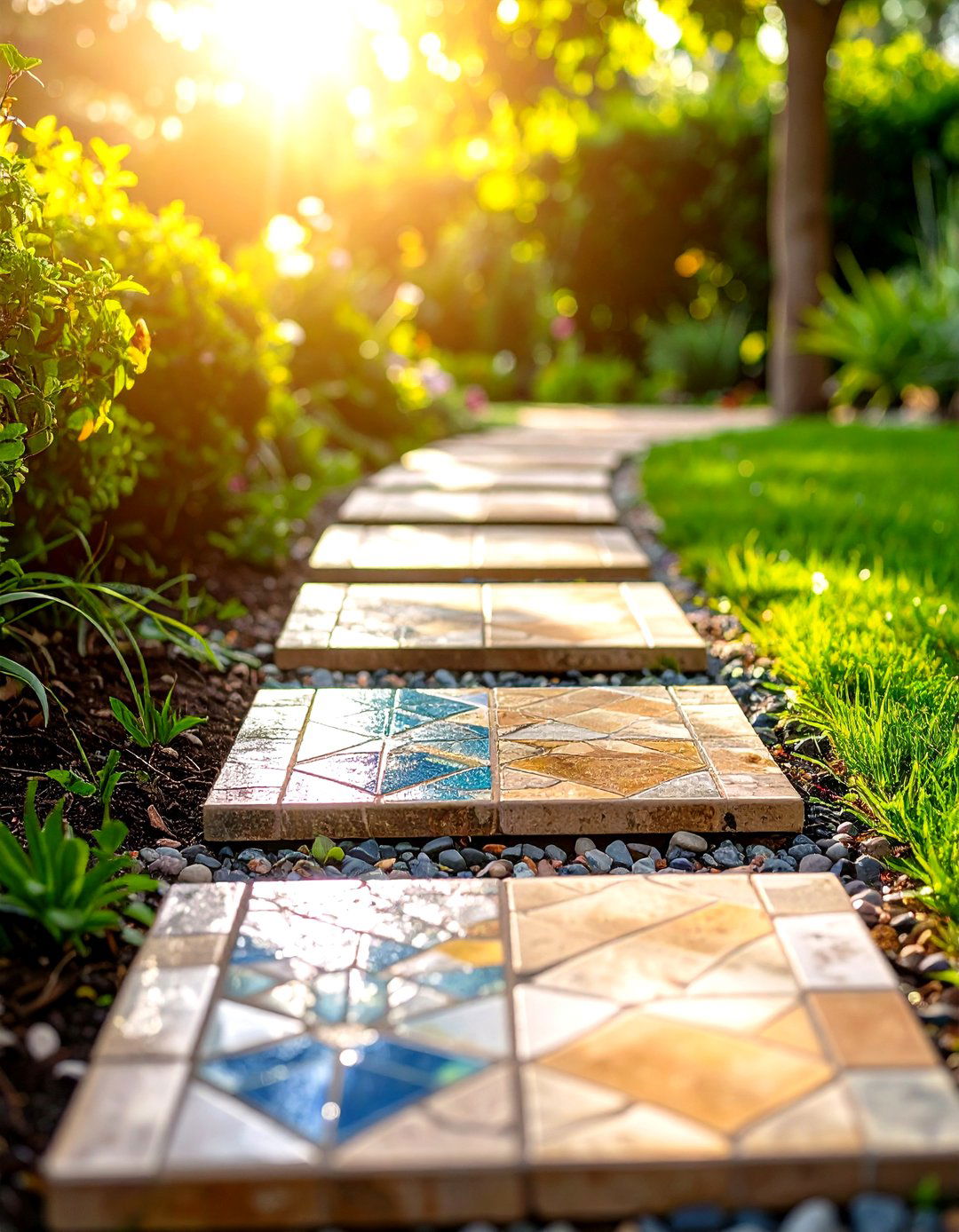
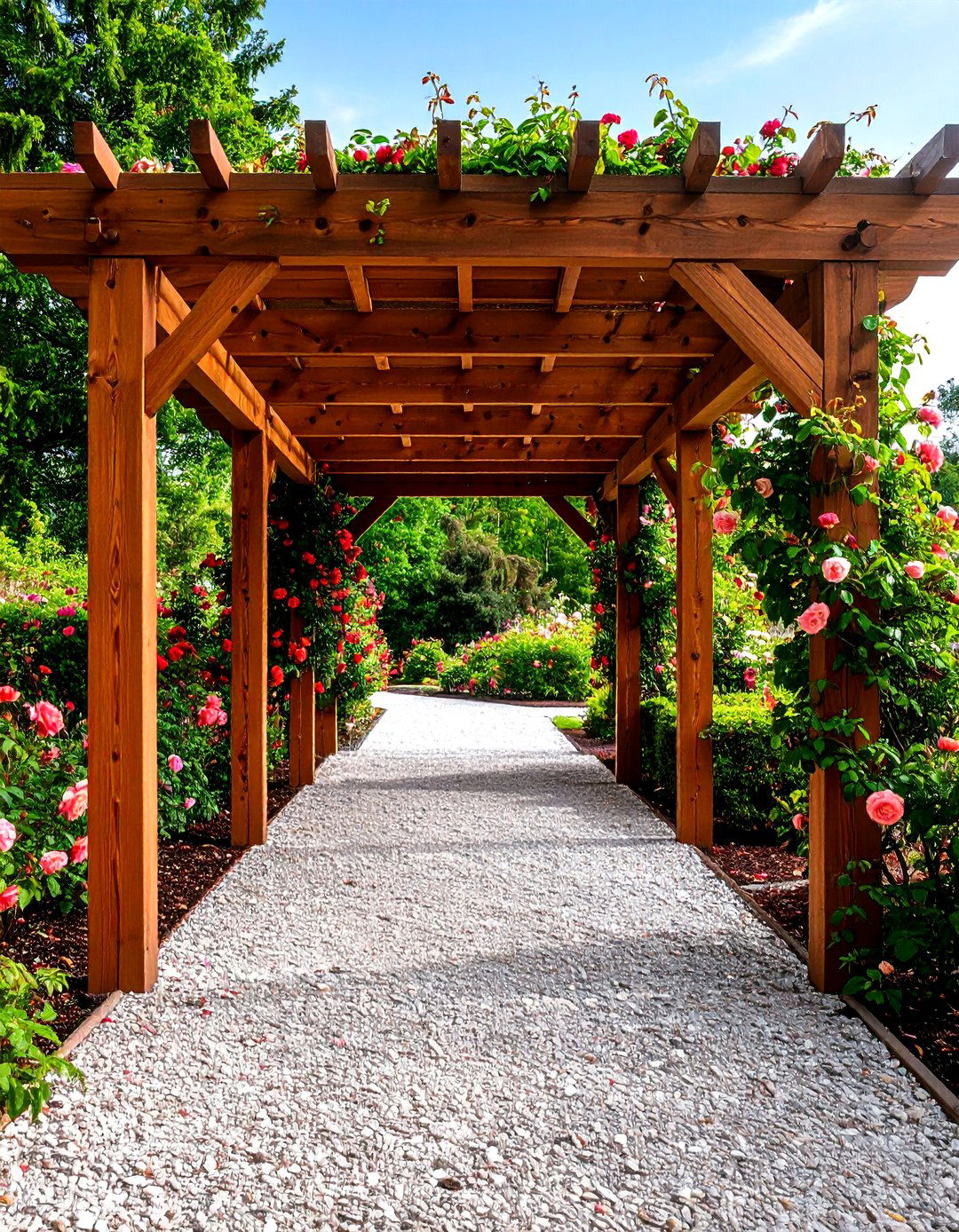

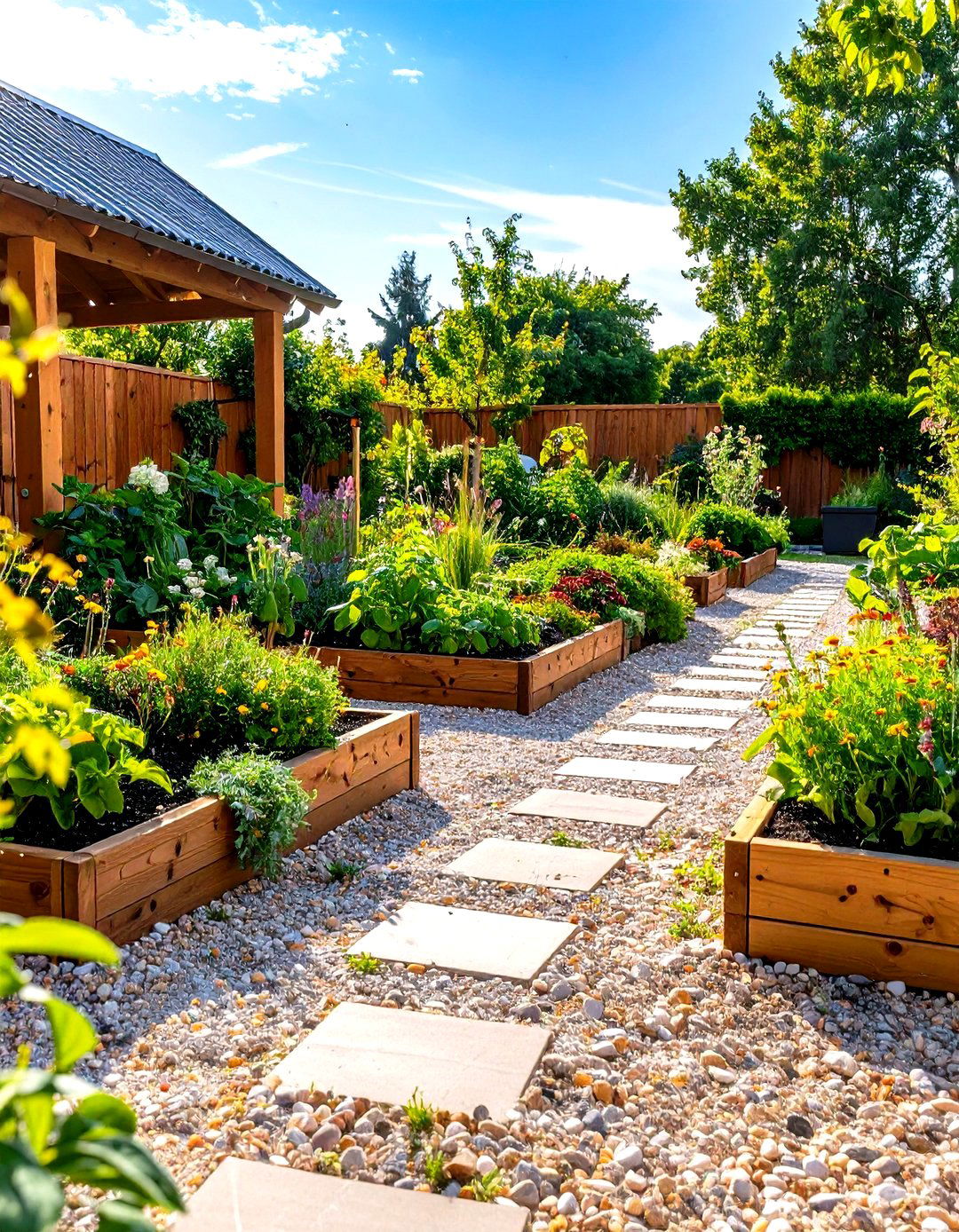
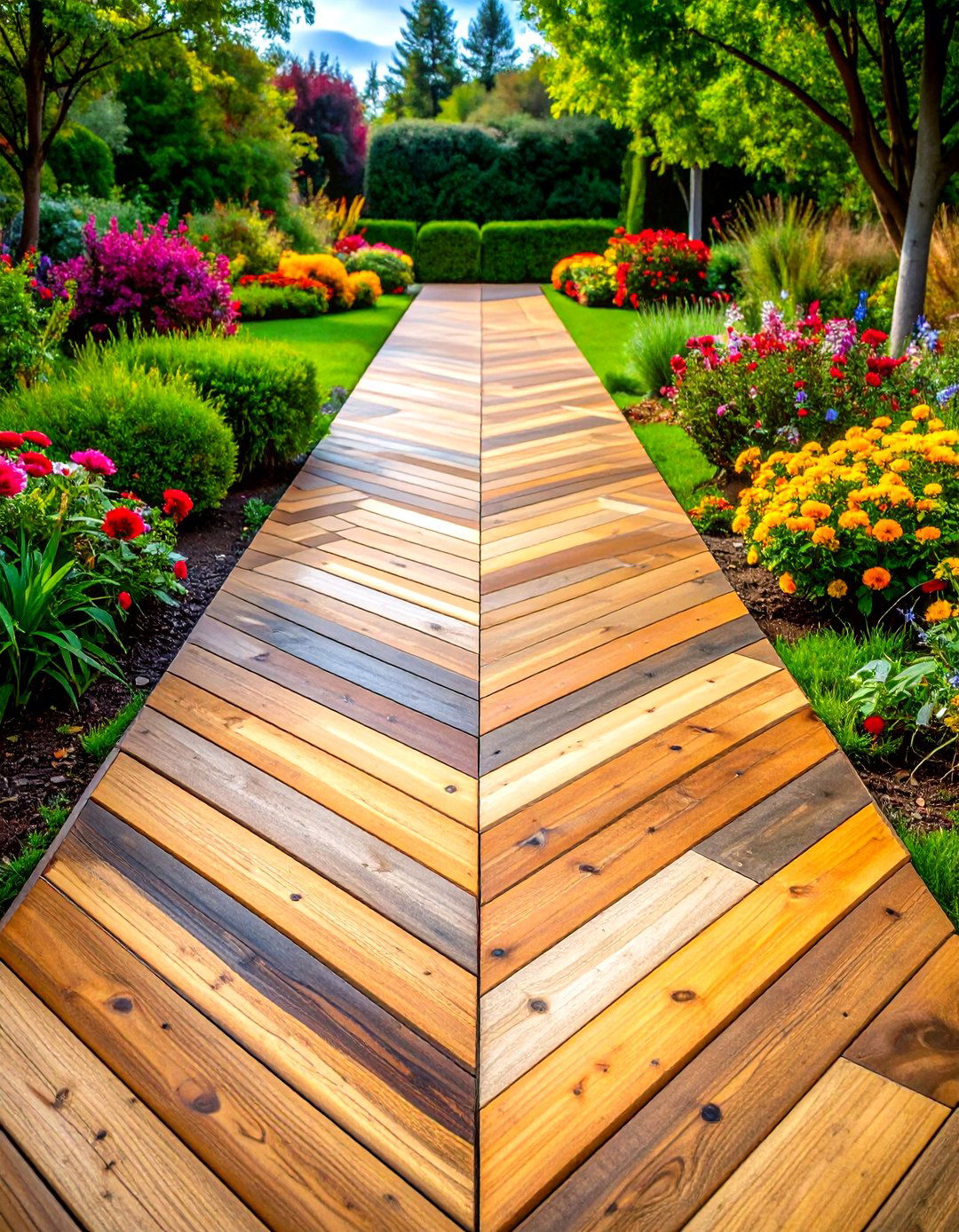
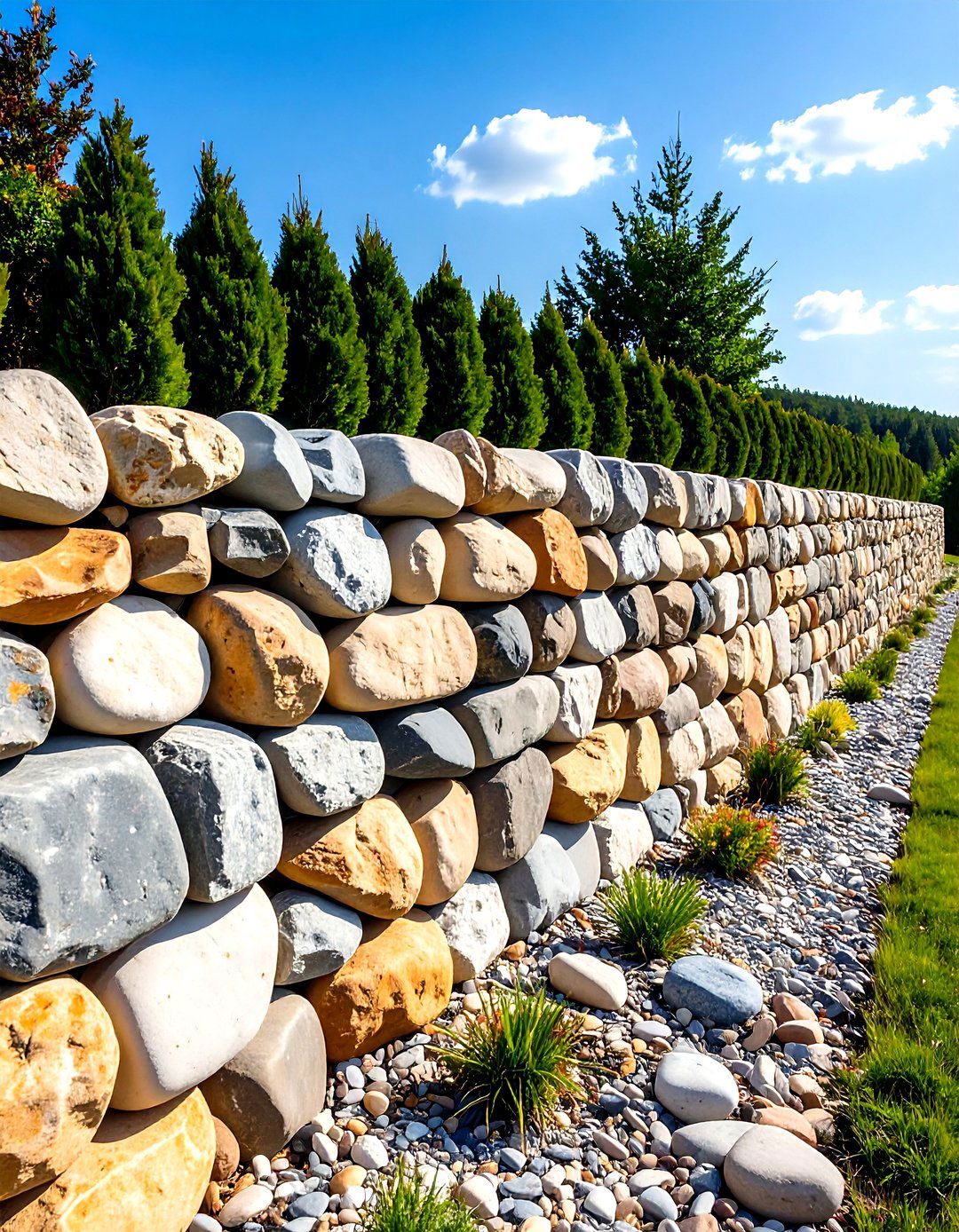


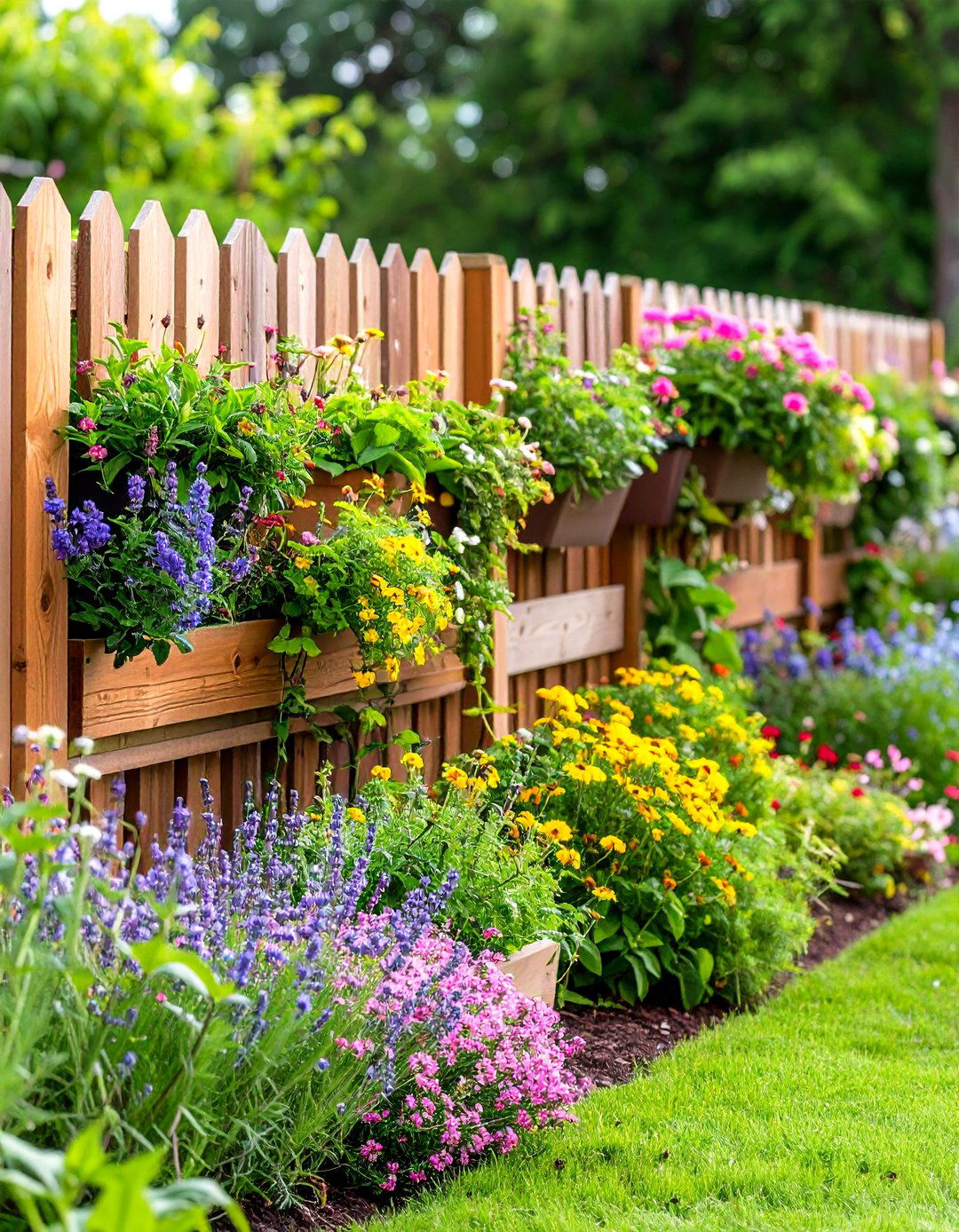
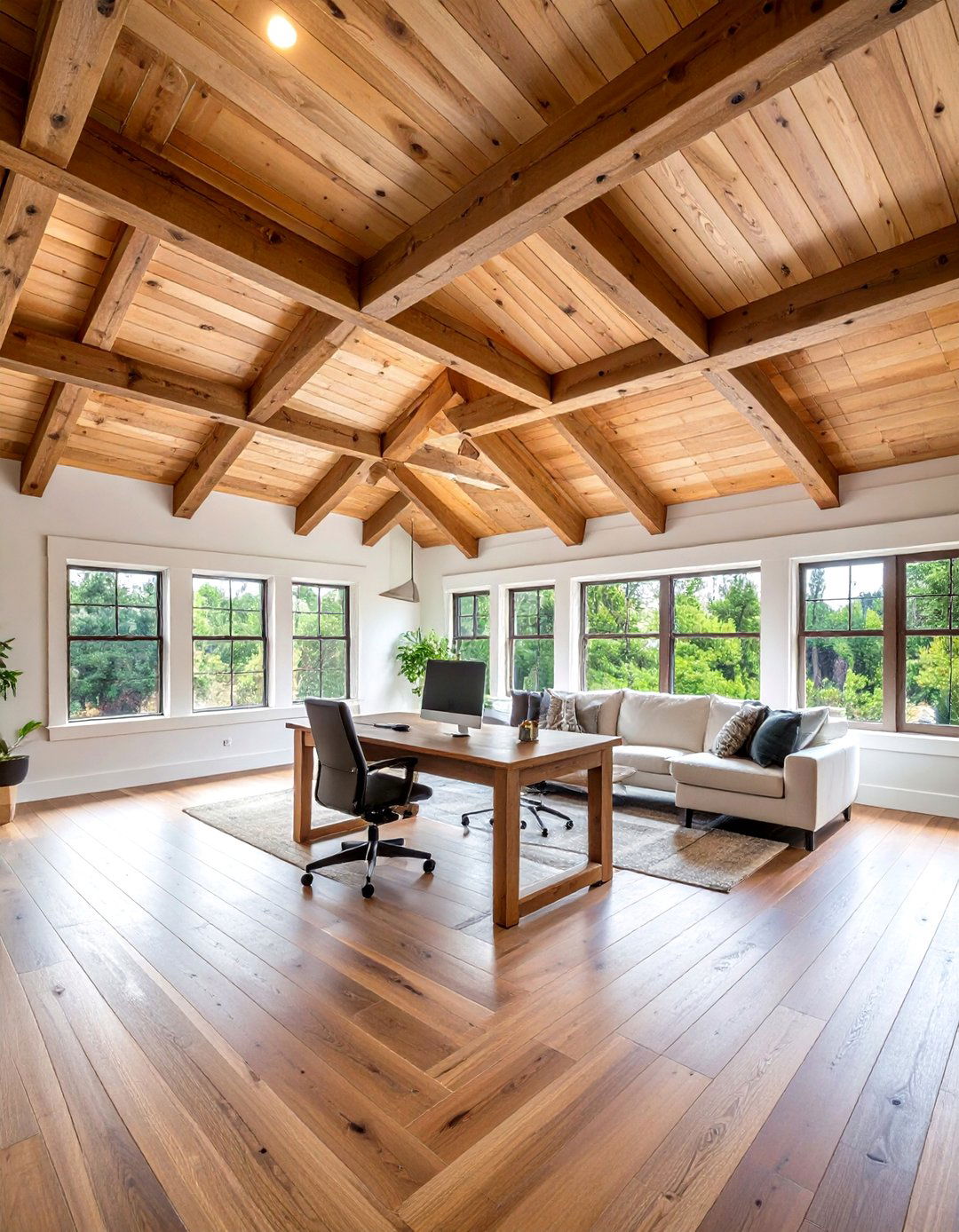
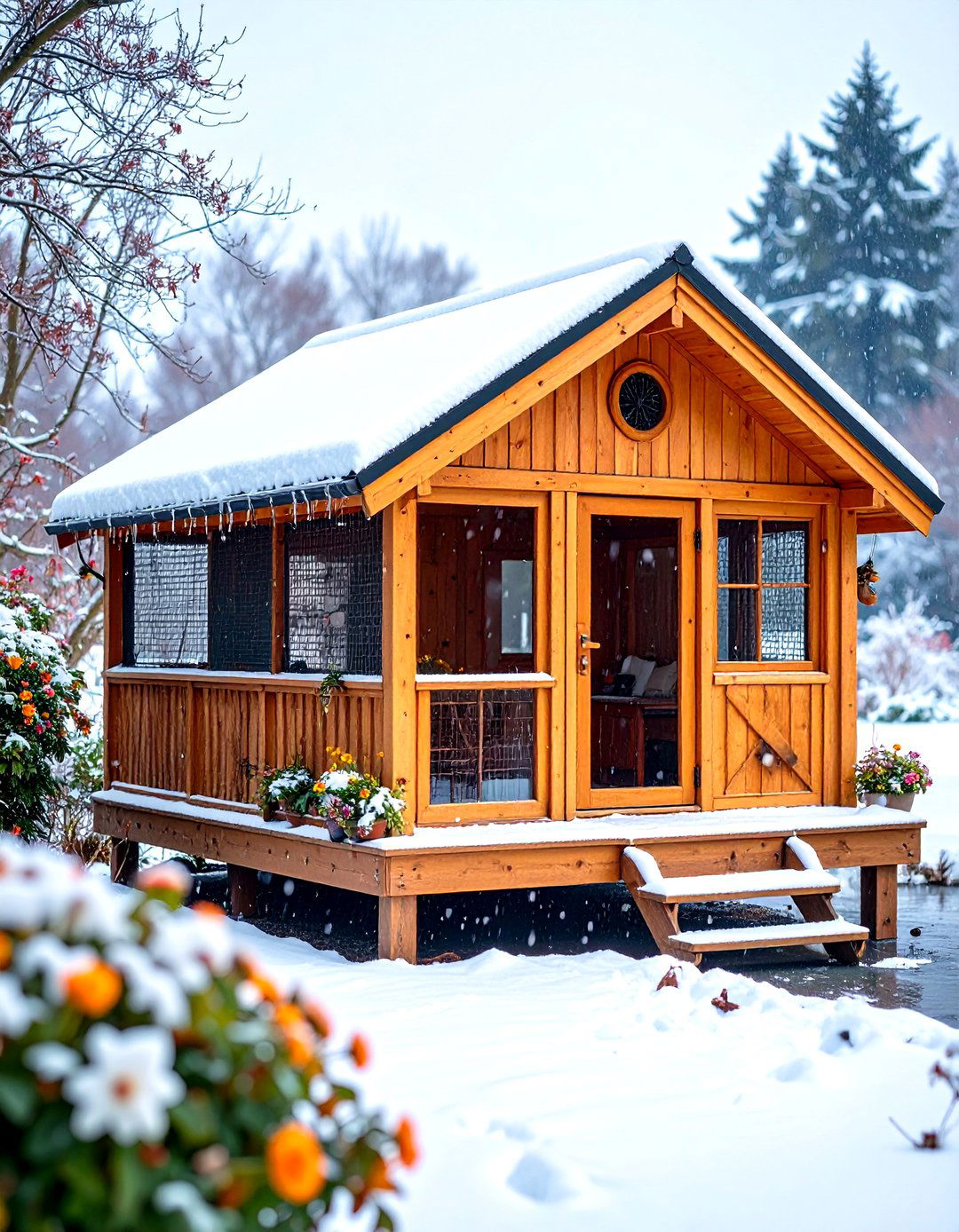

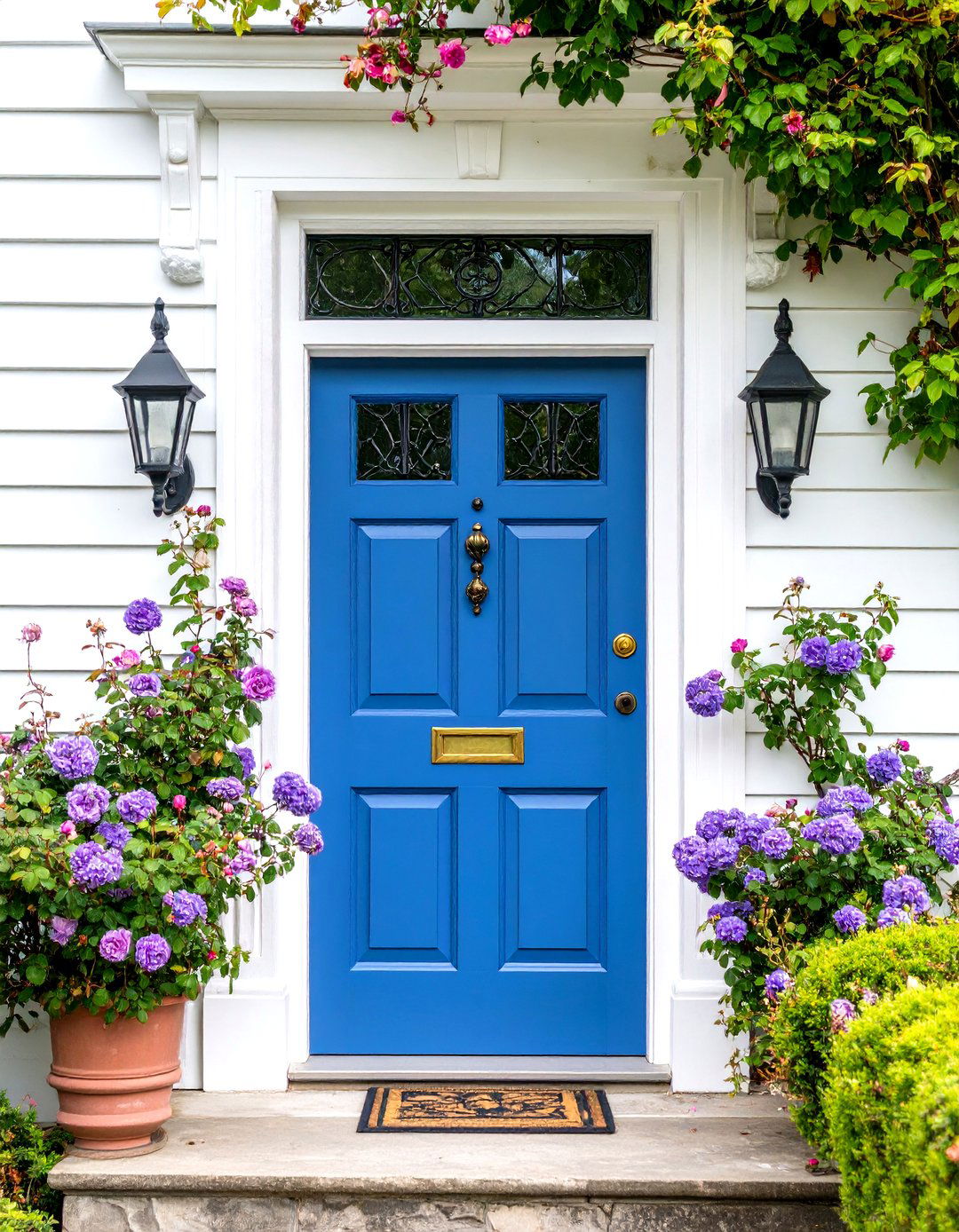


Leave a Reply